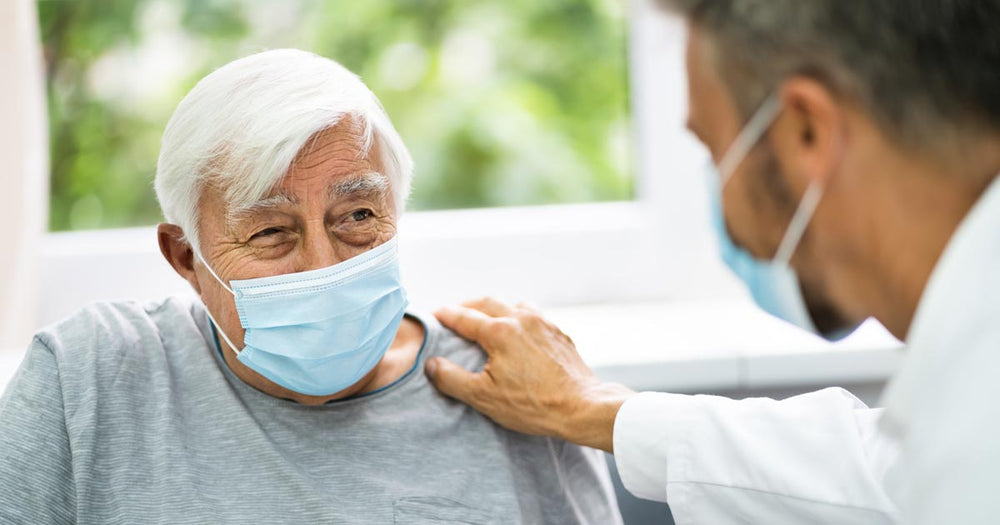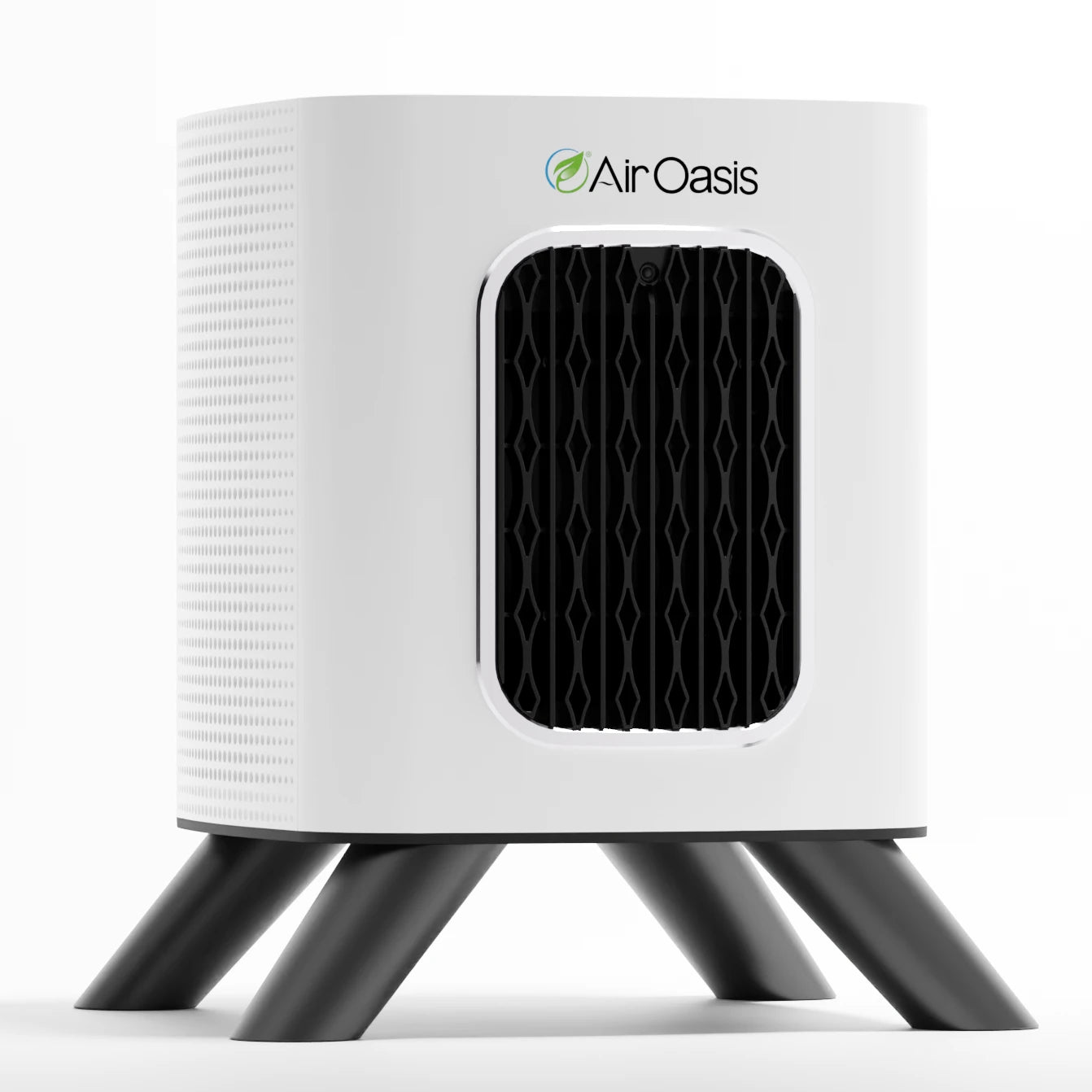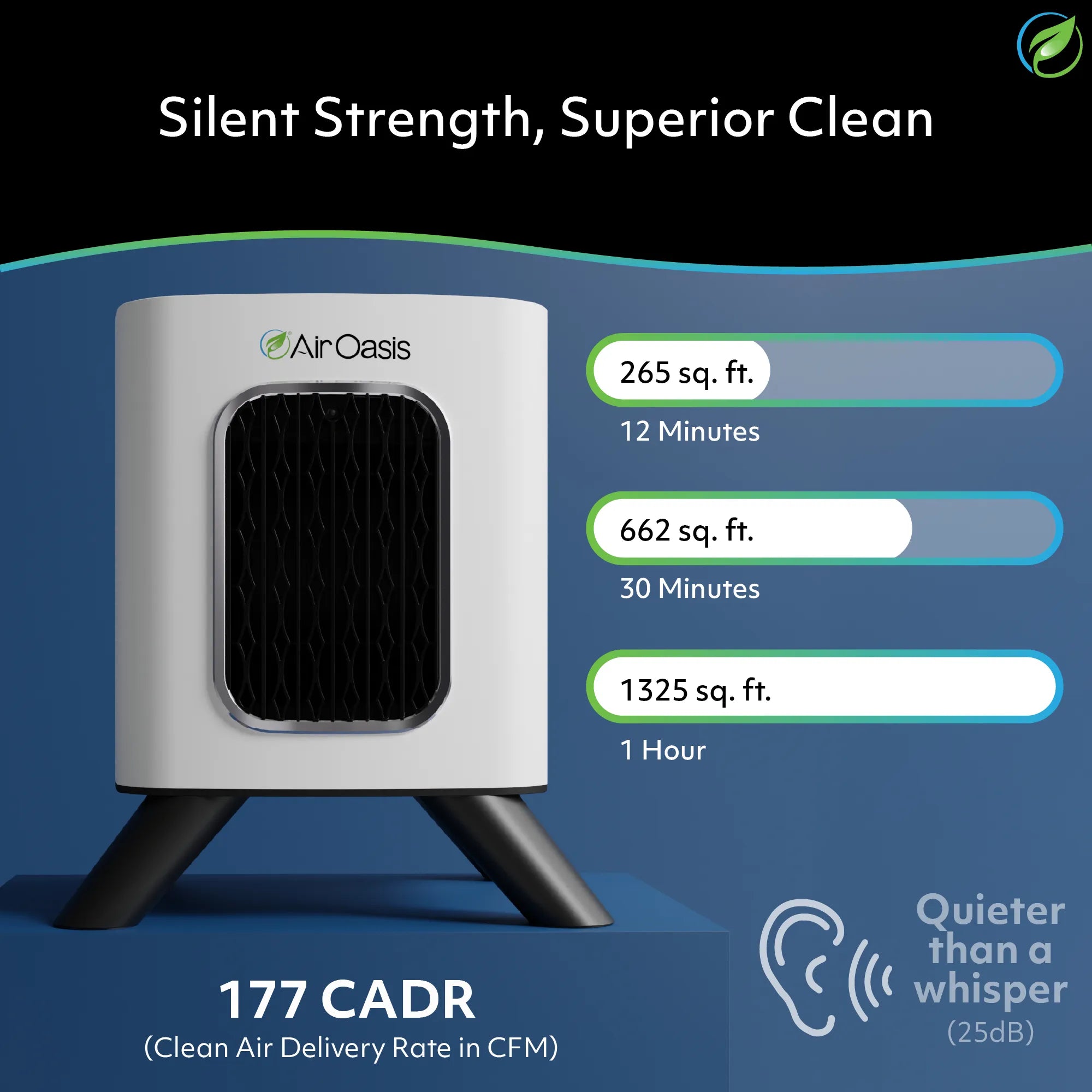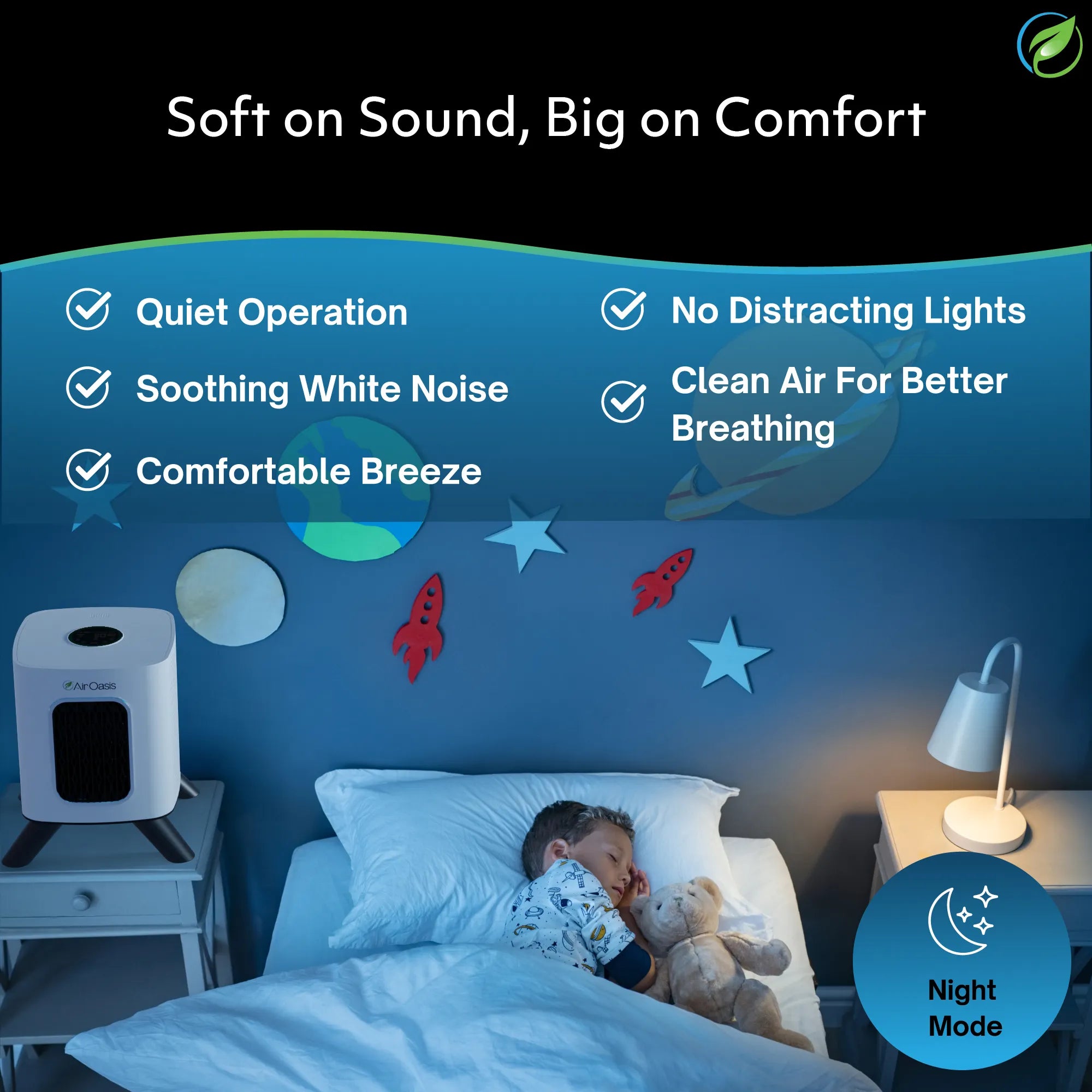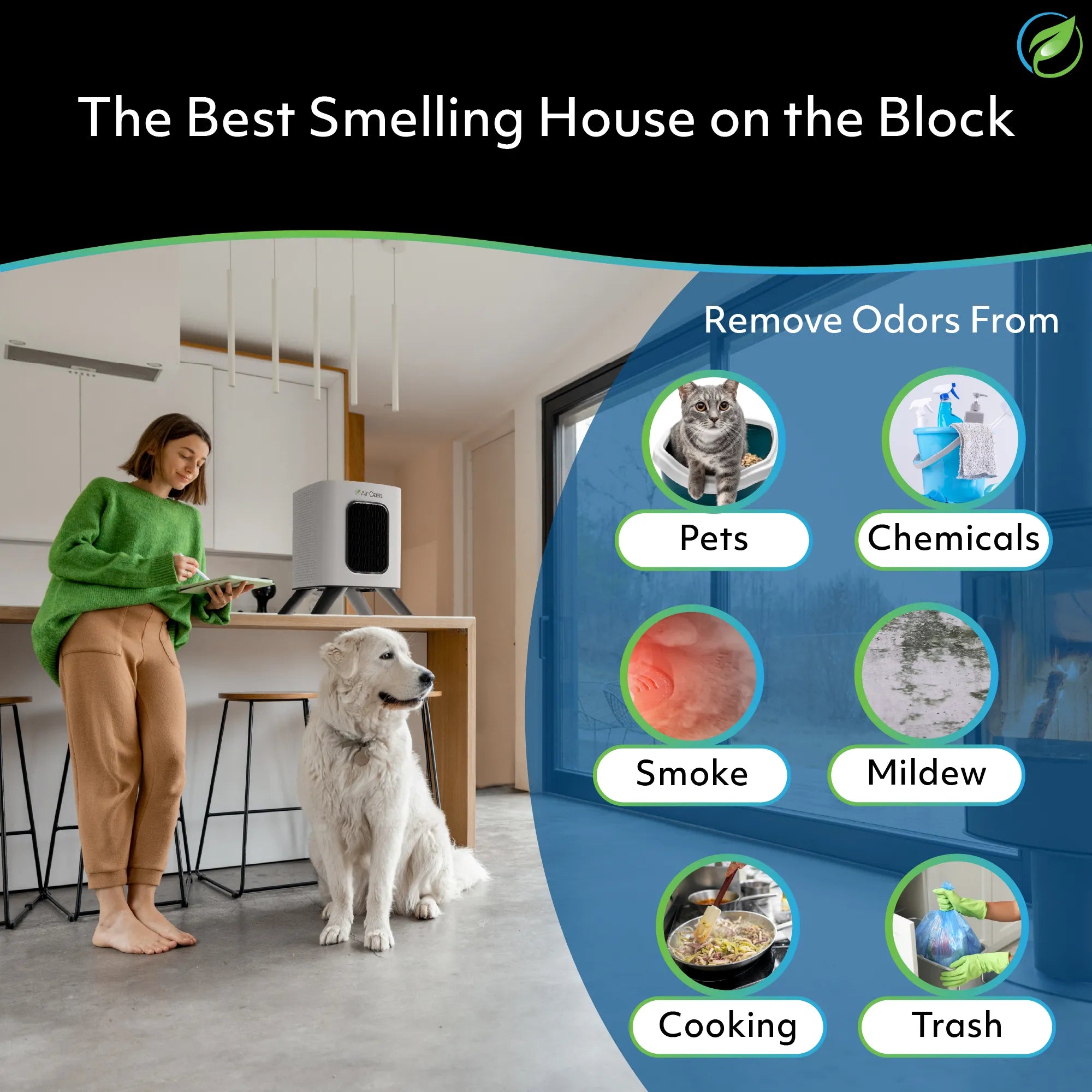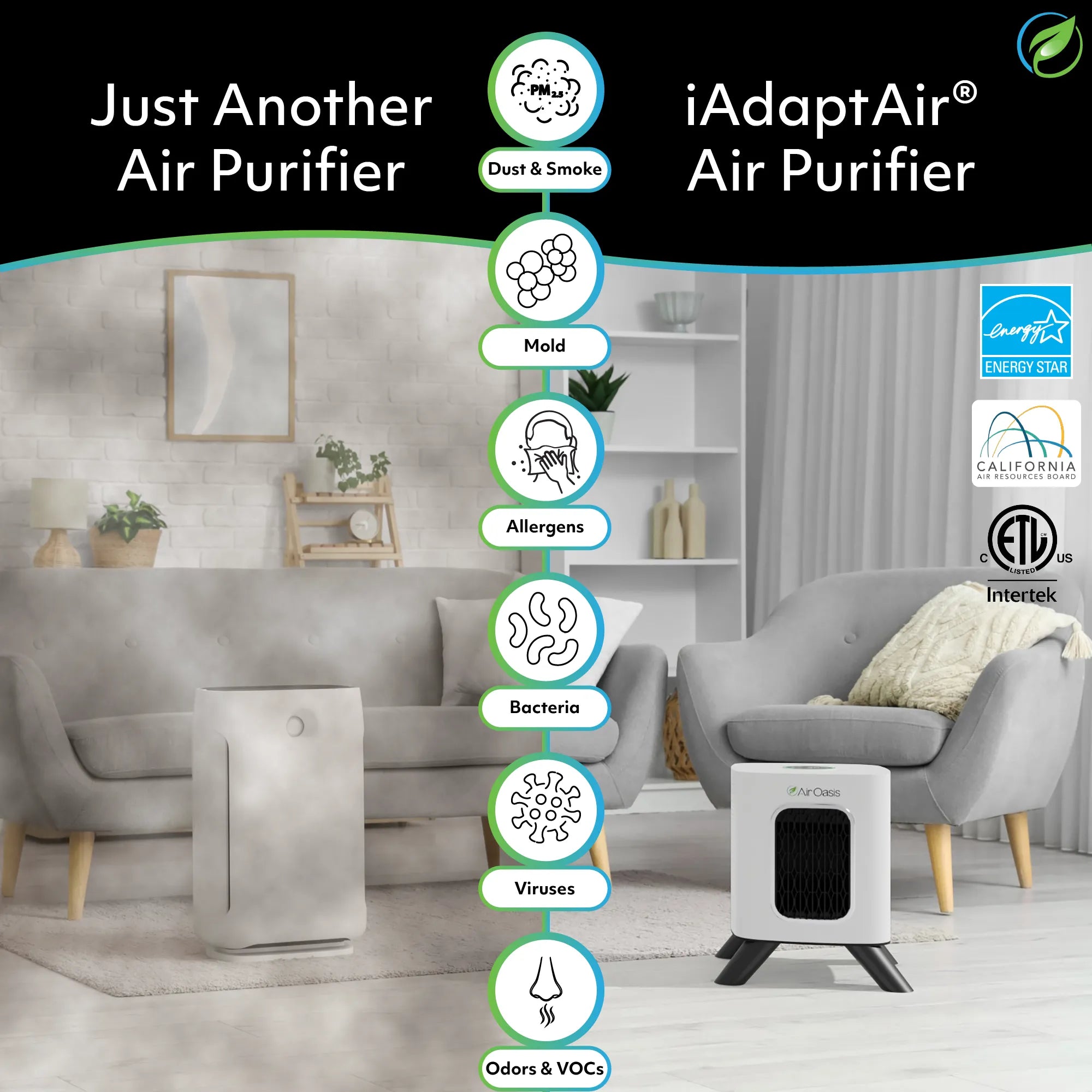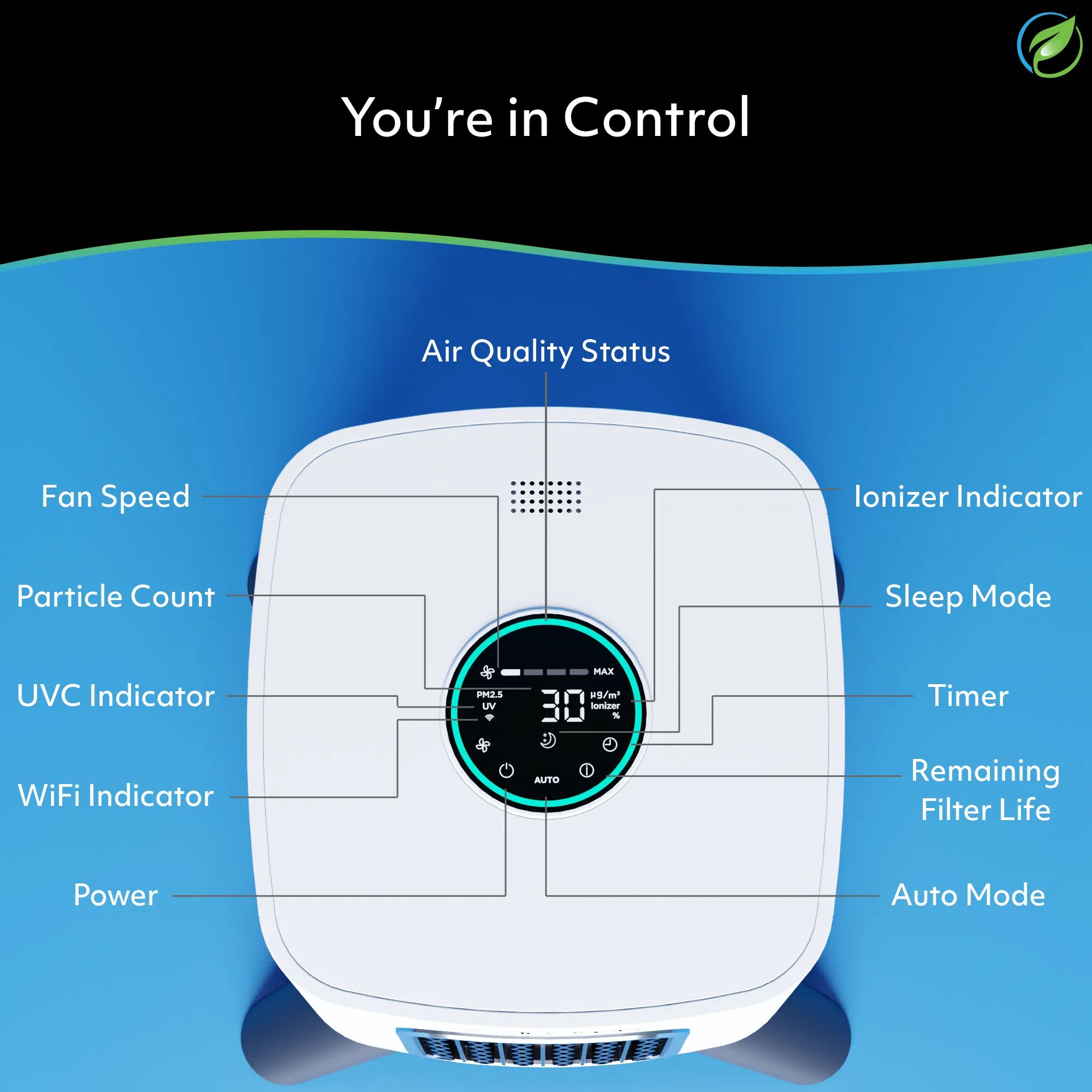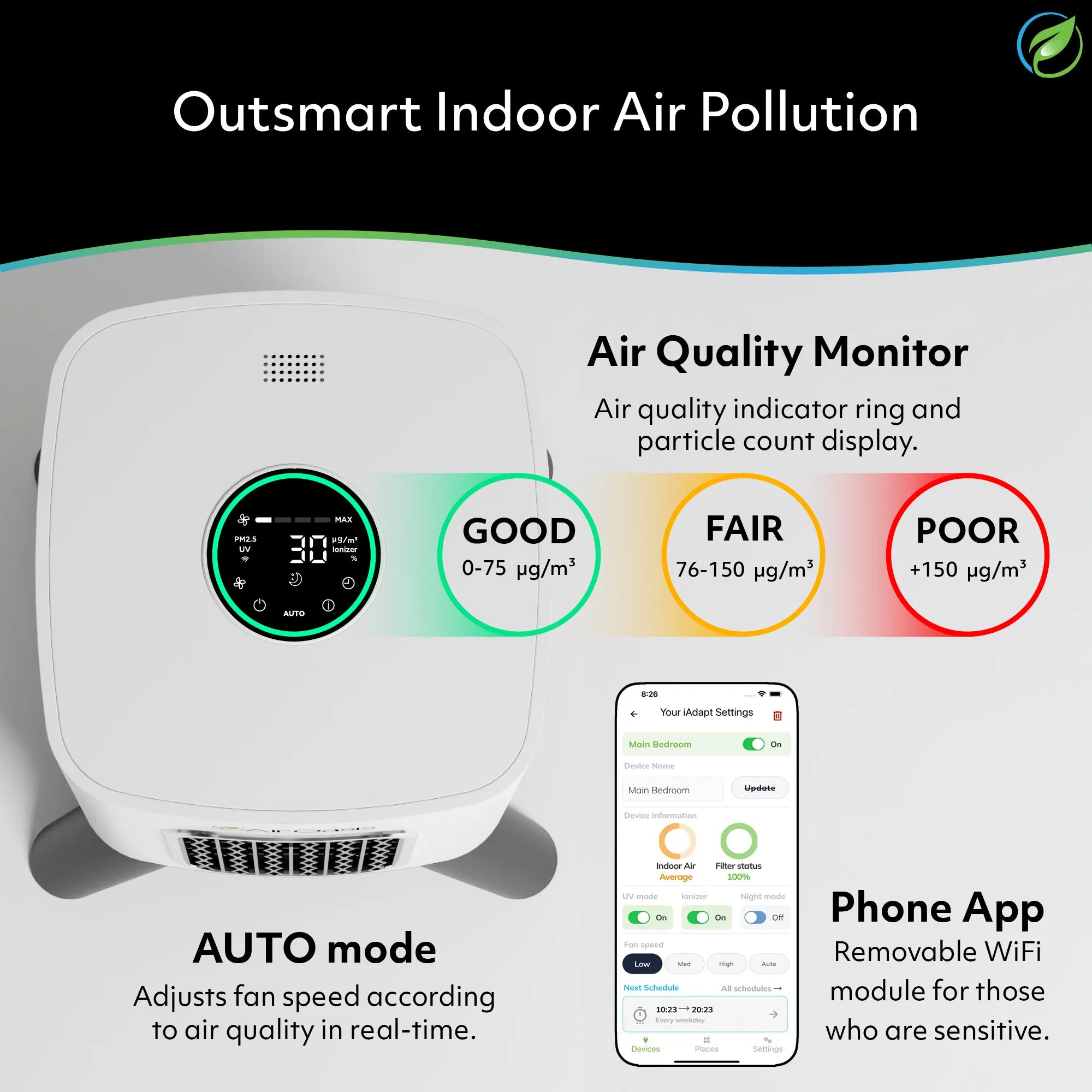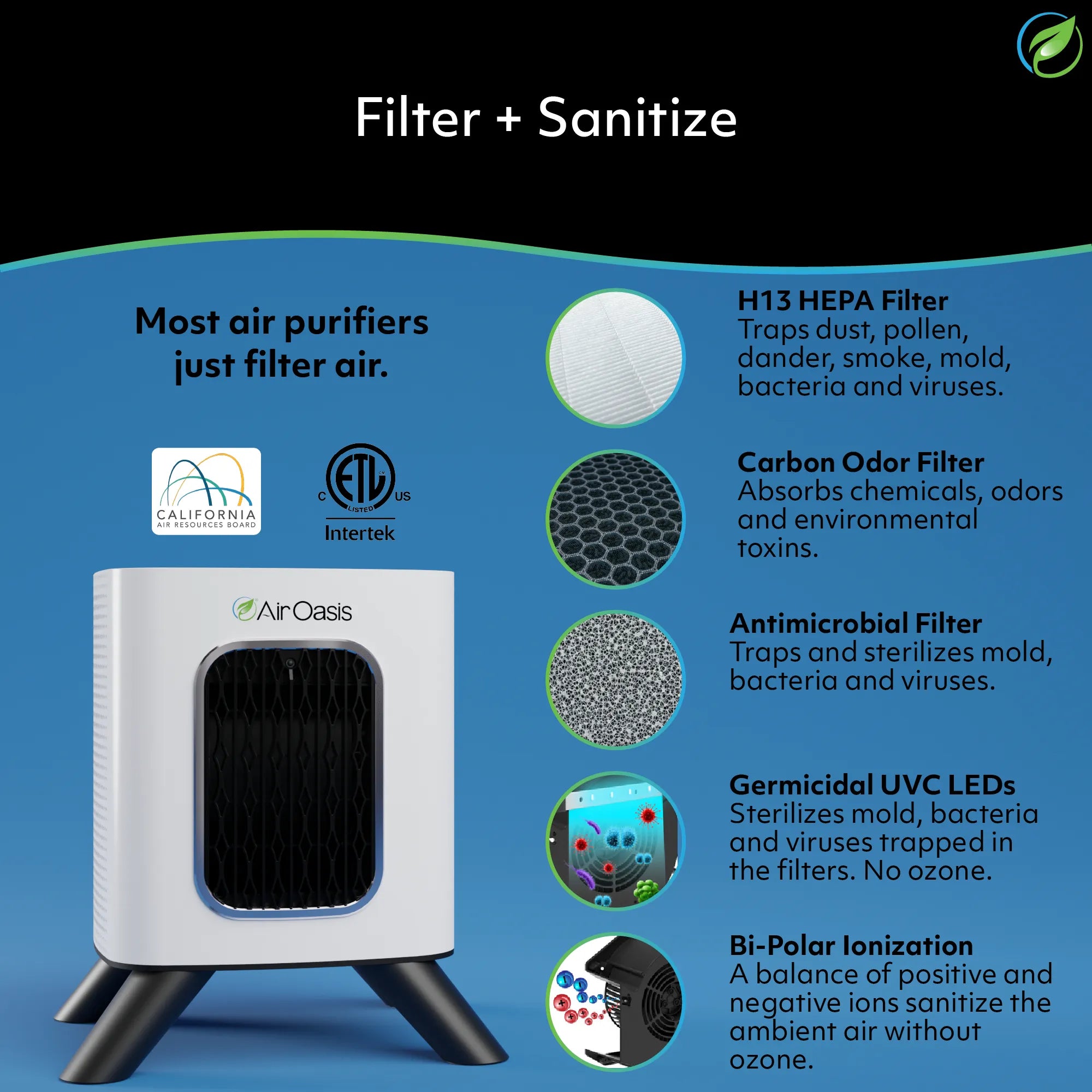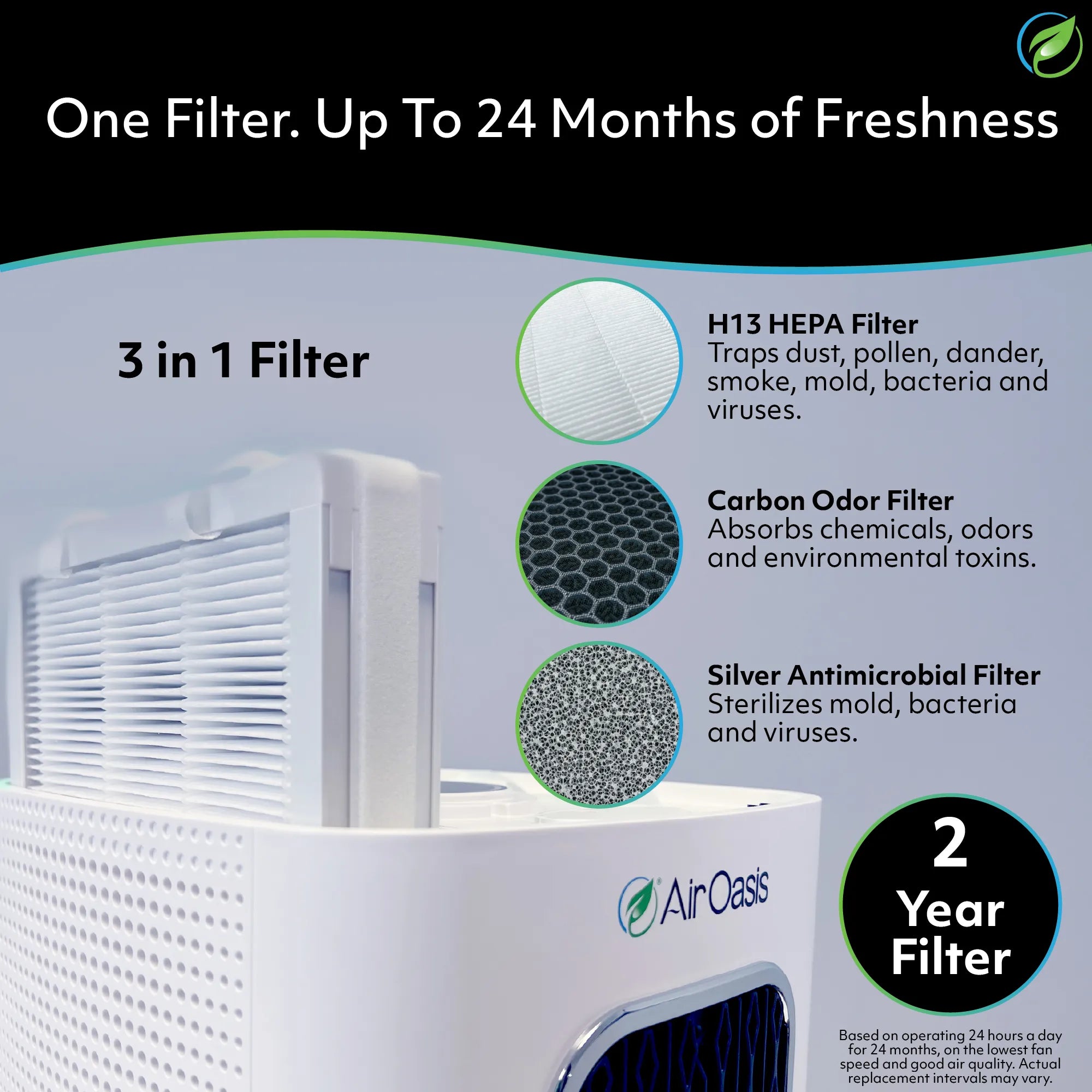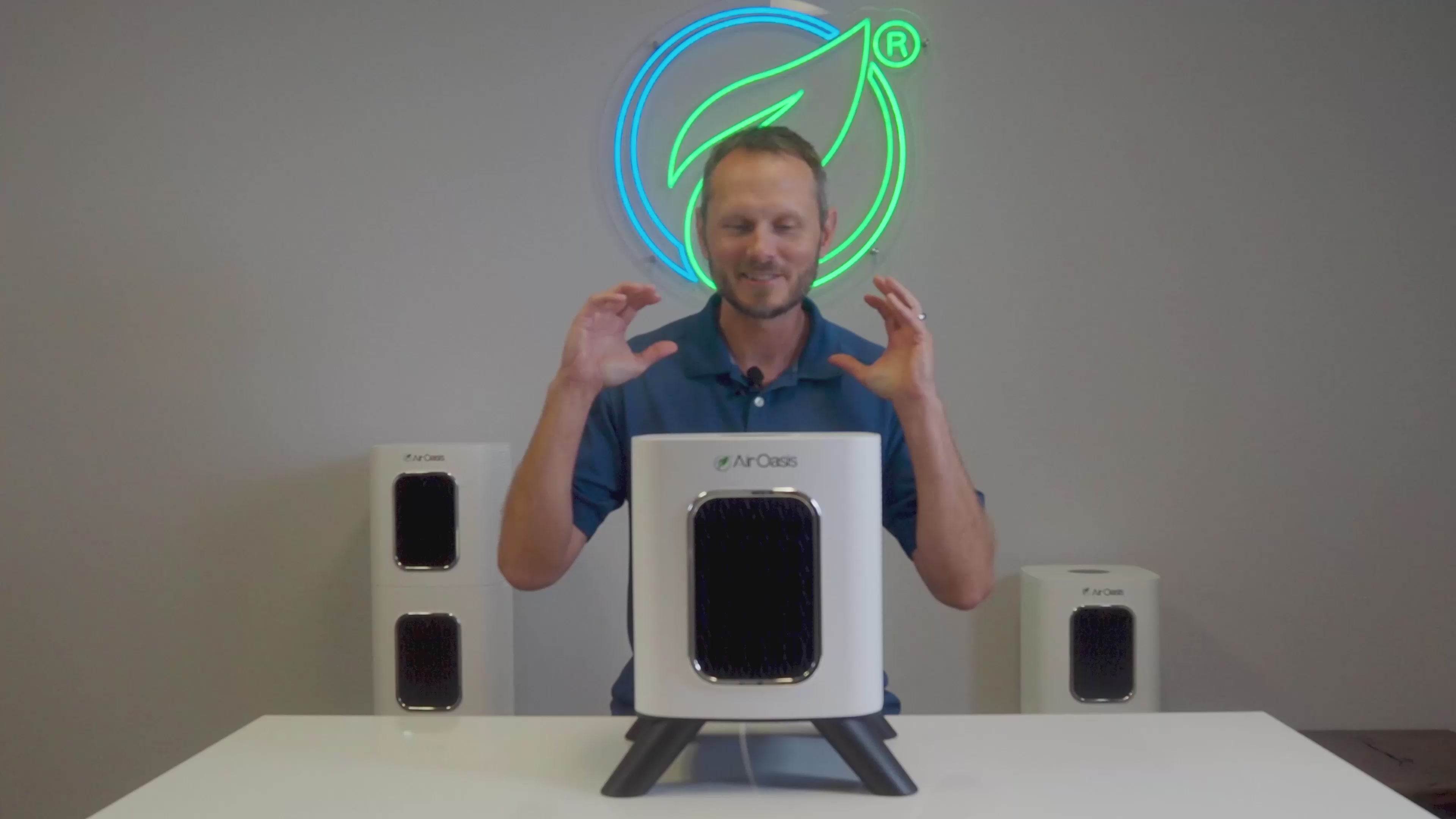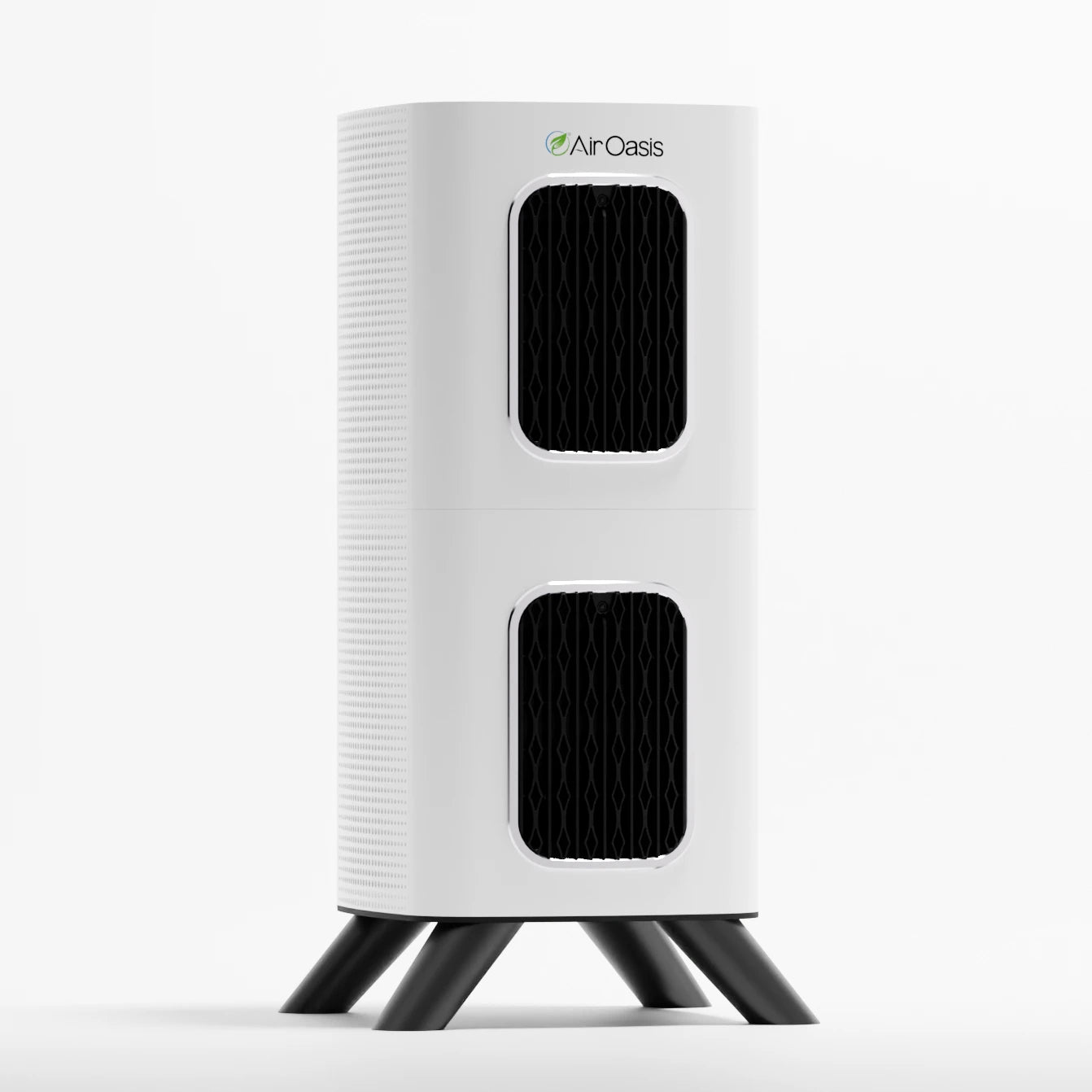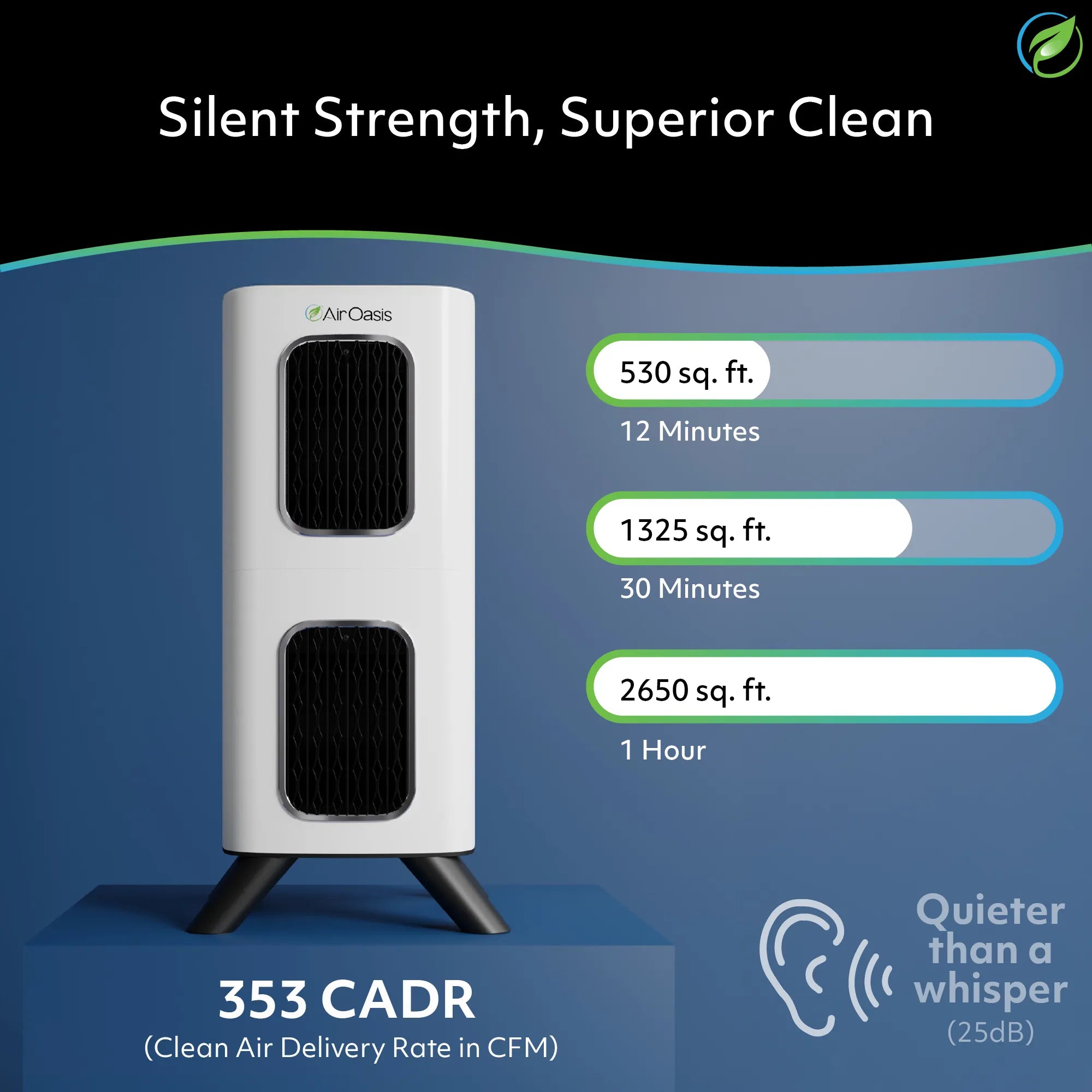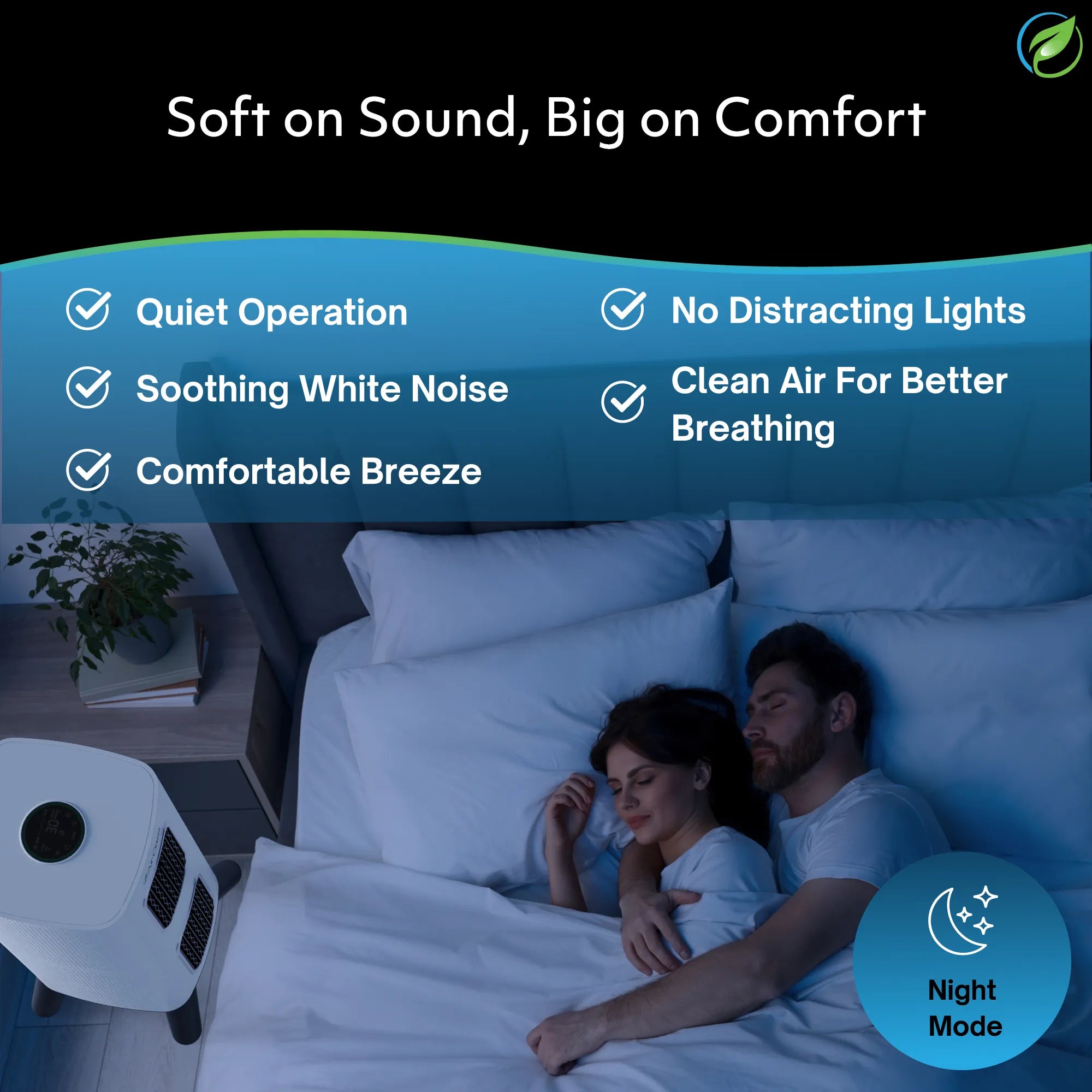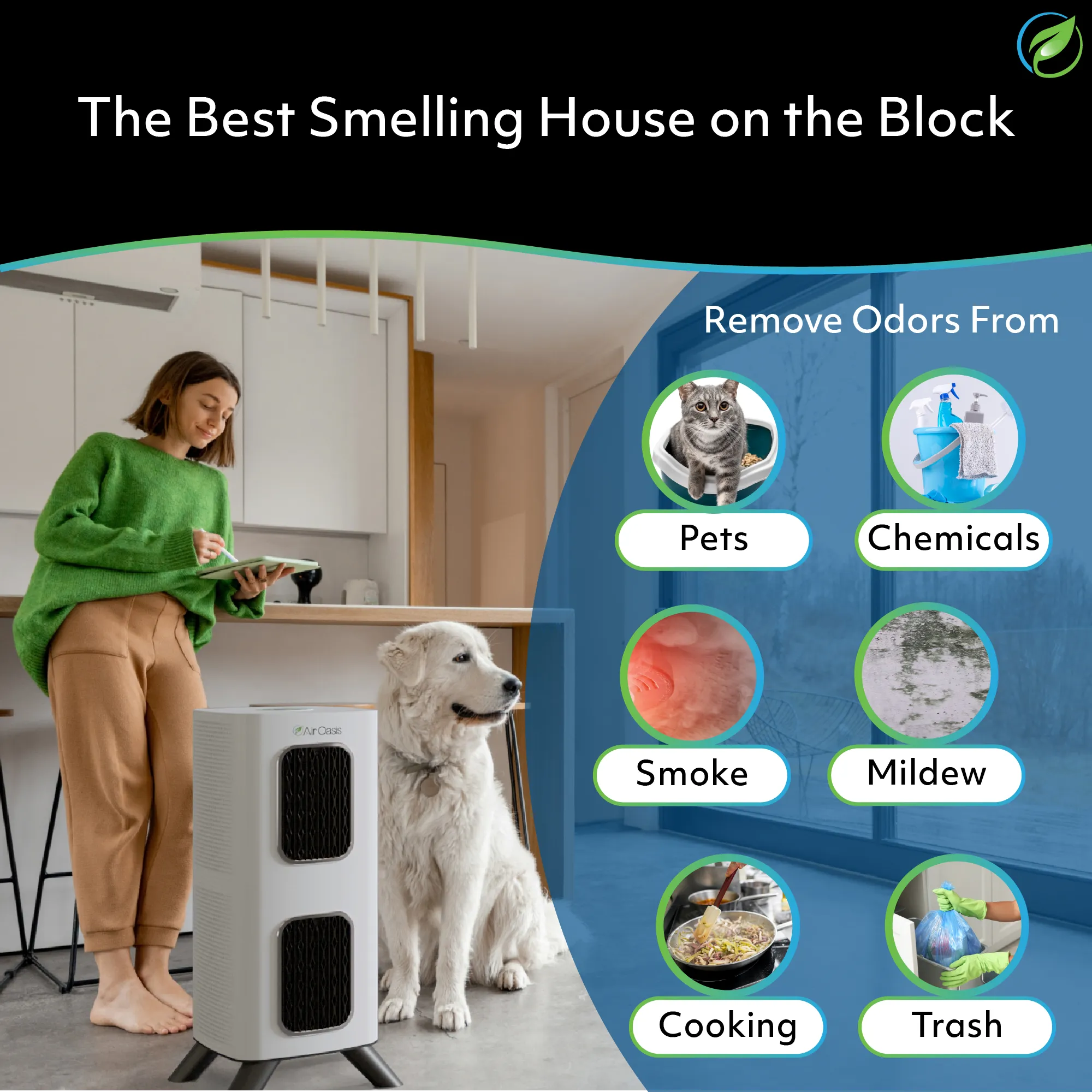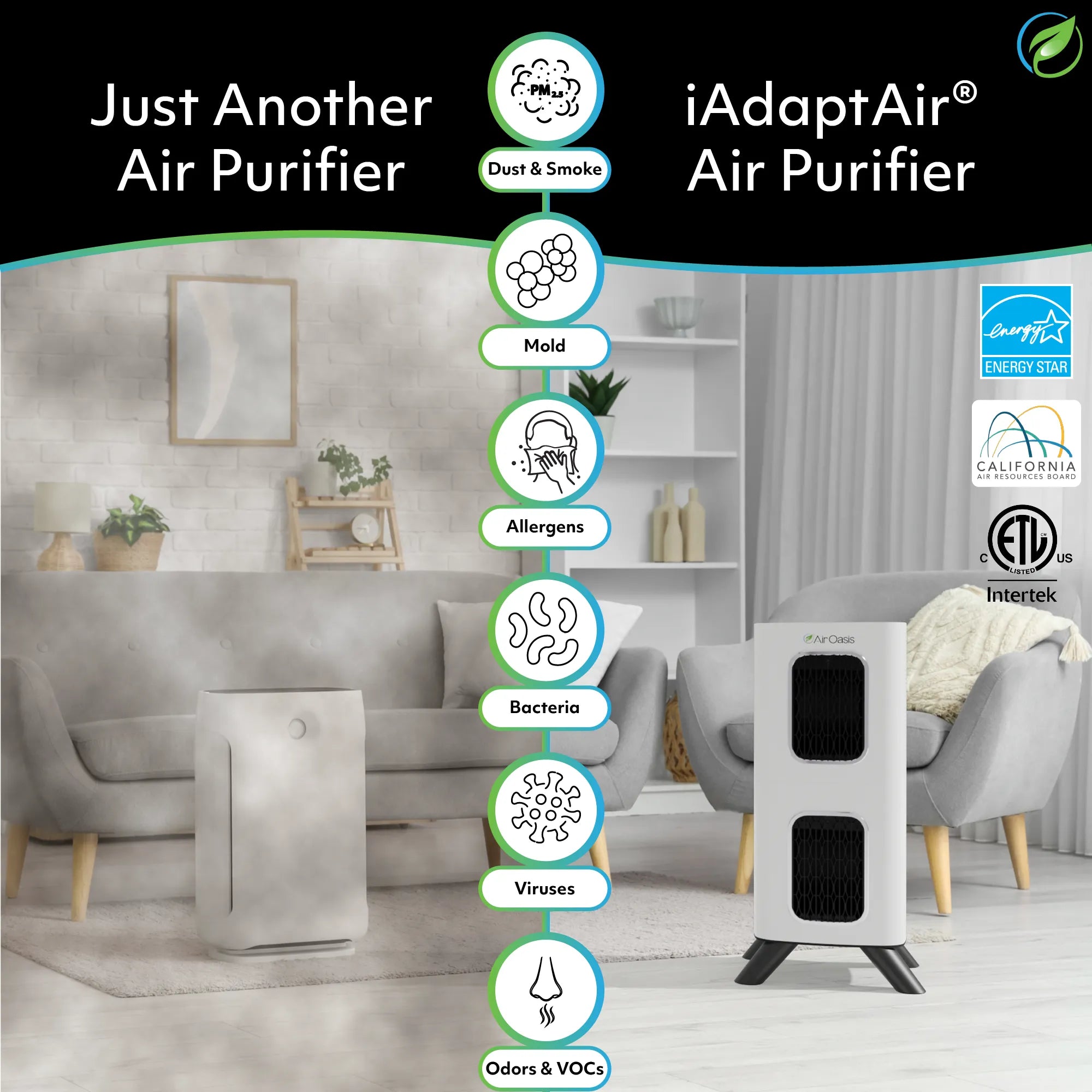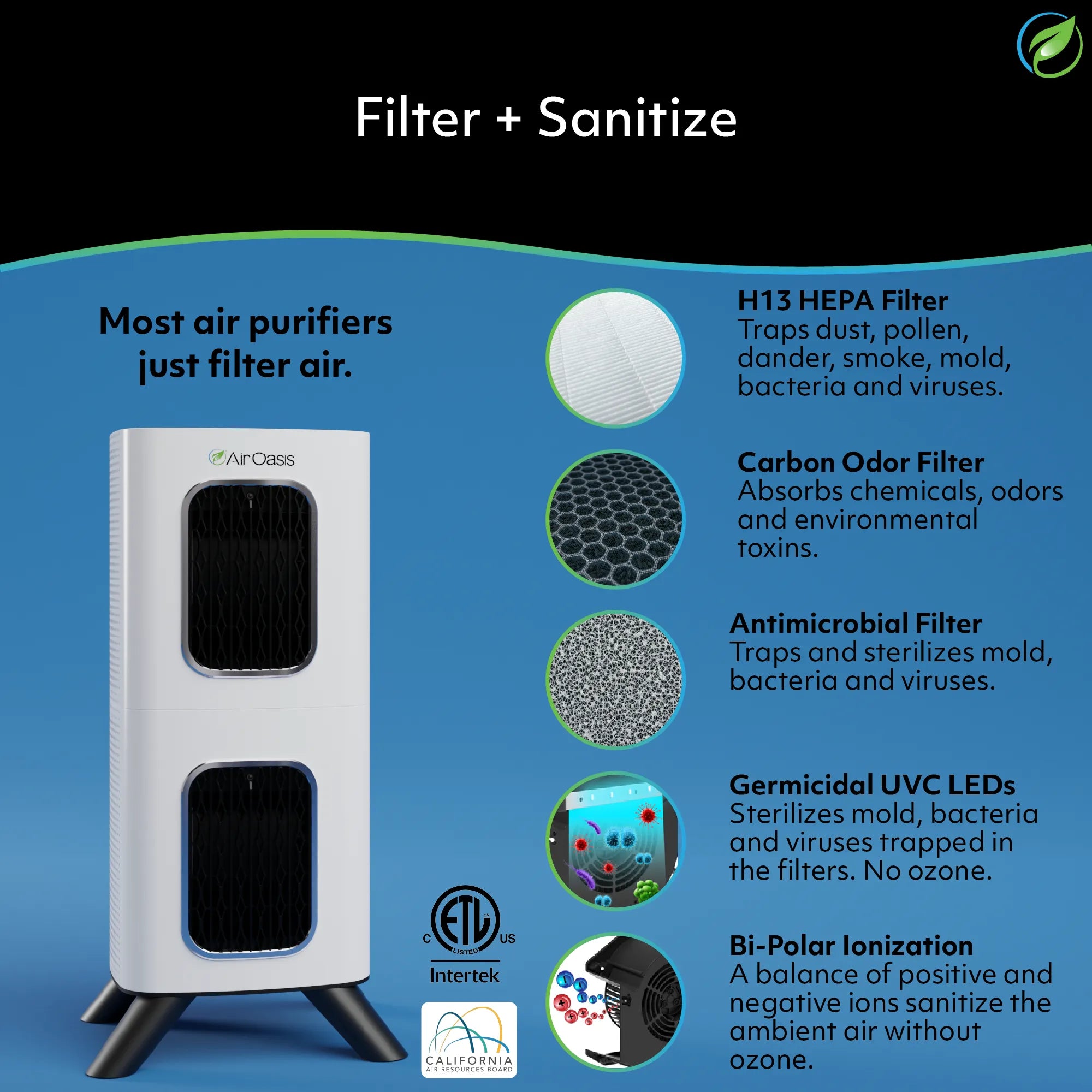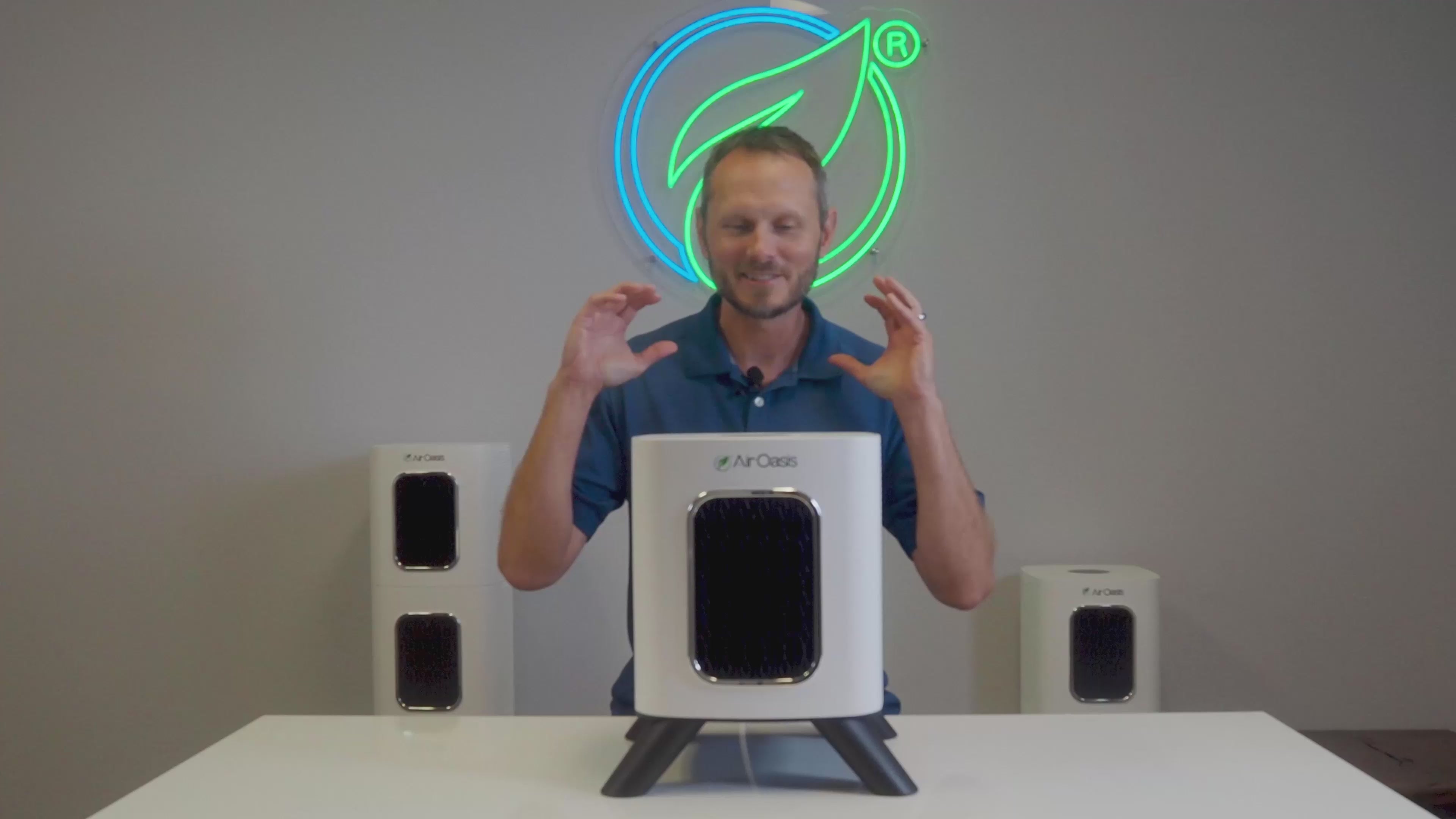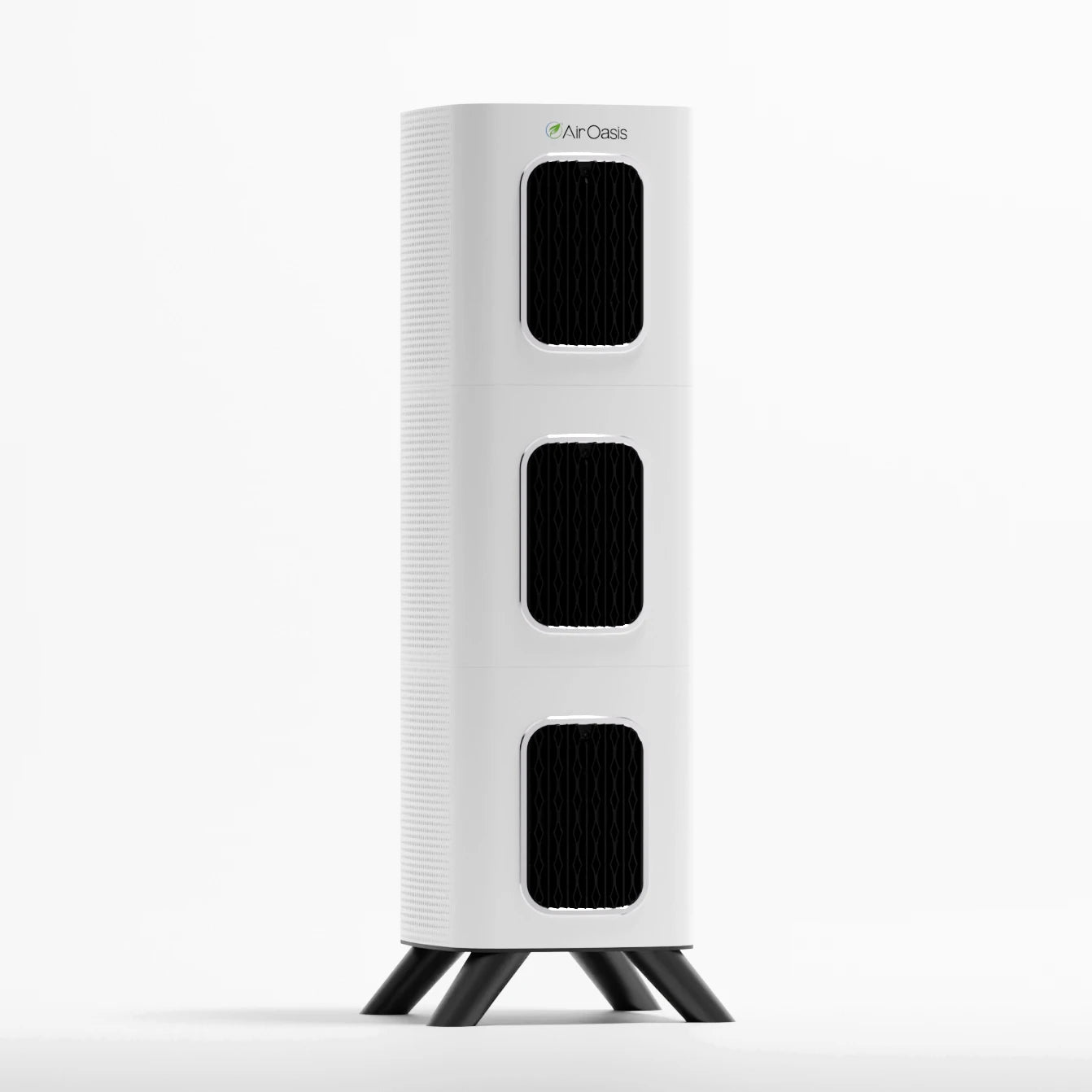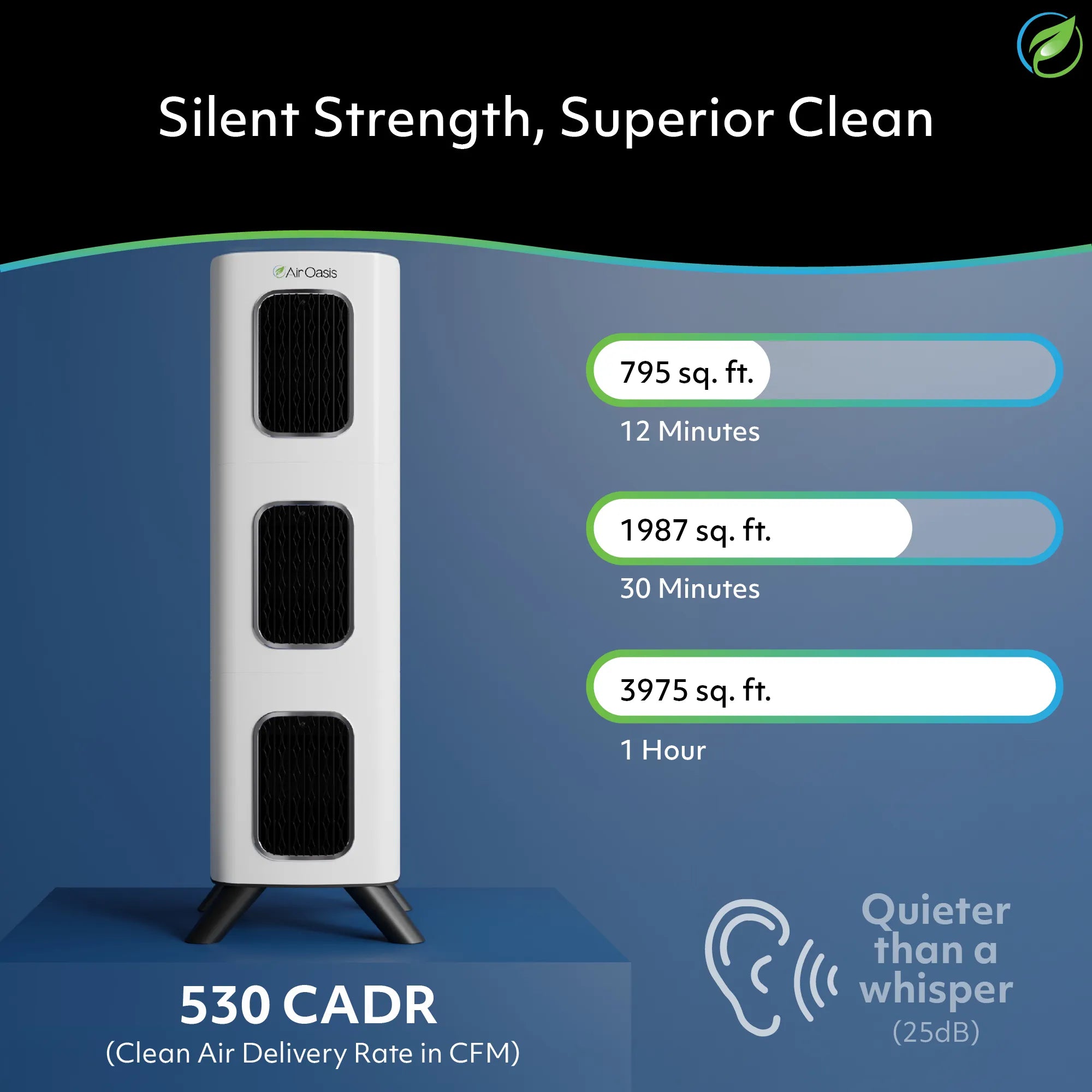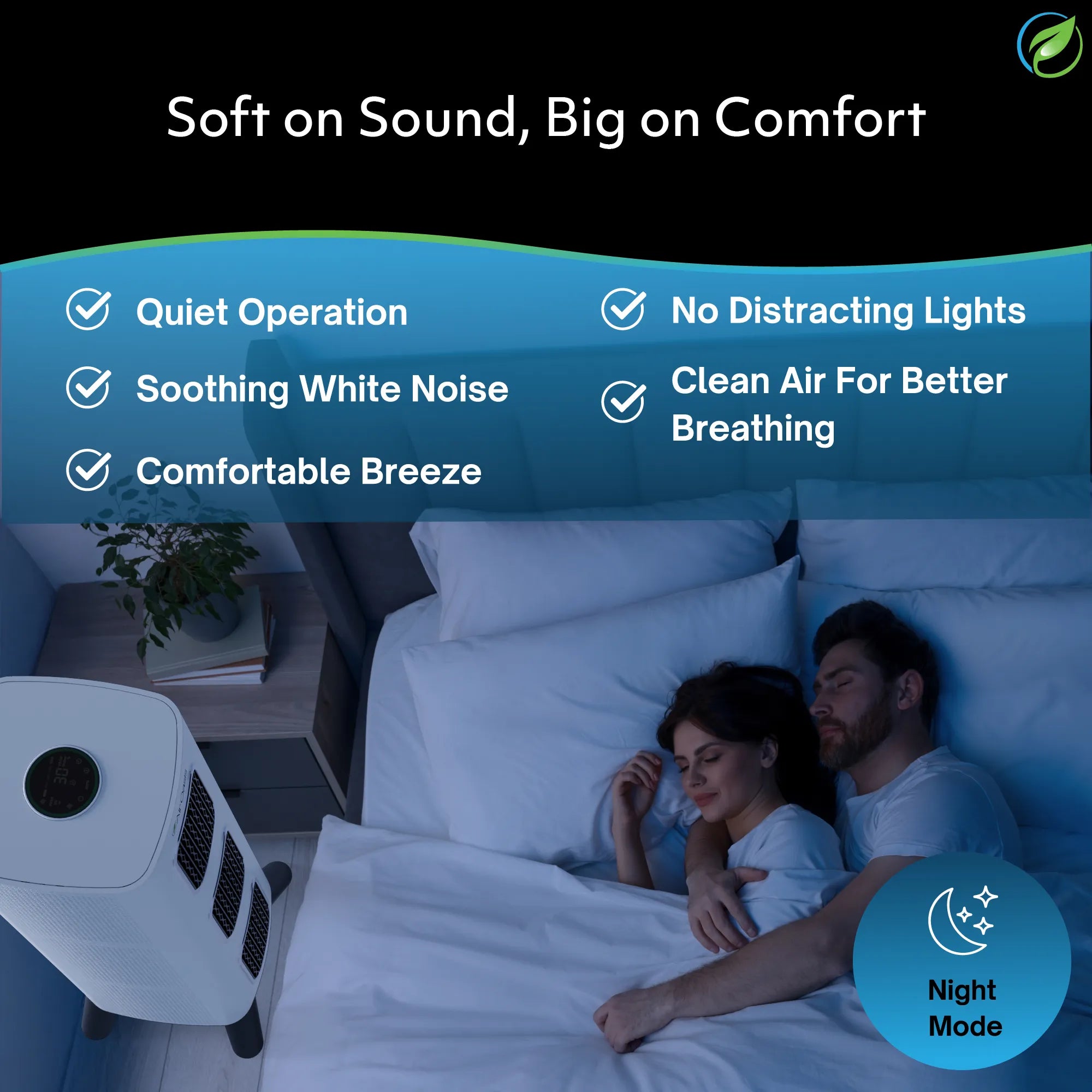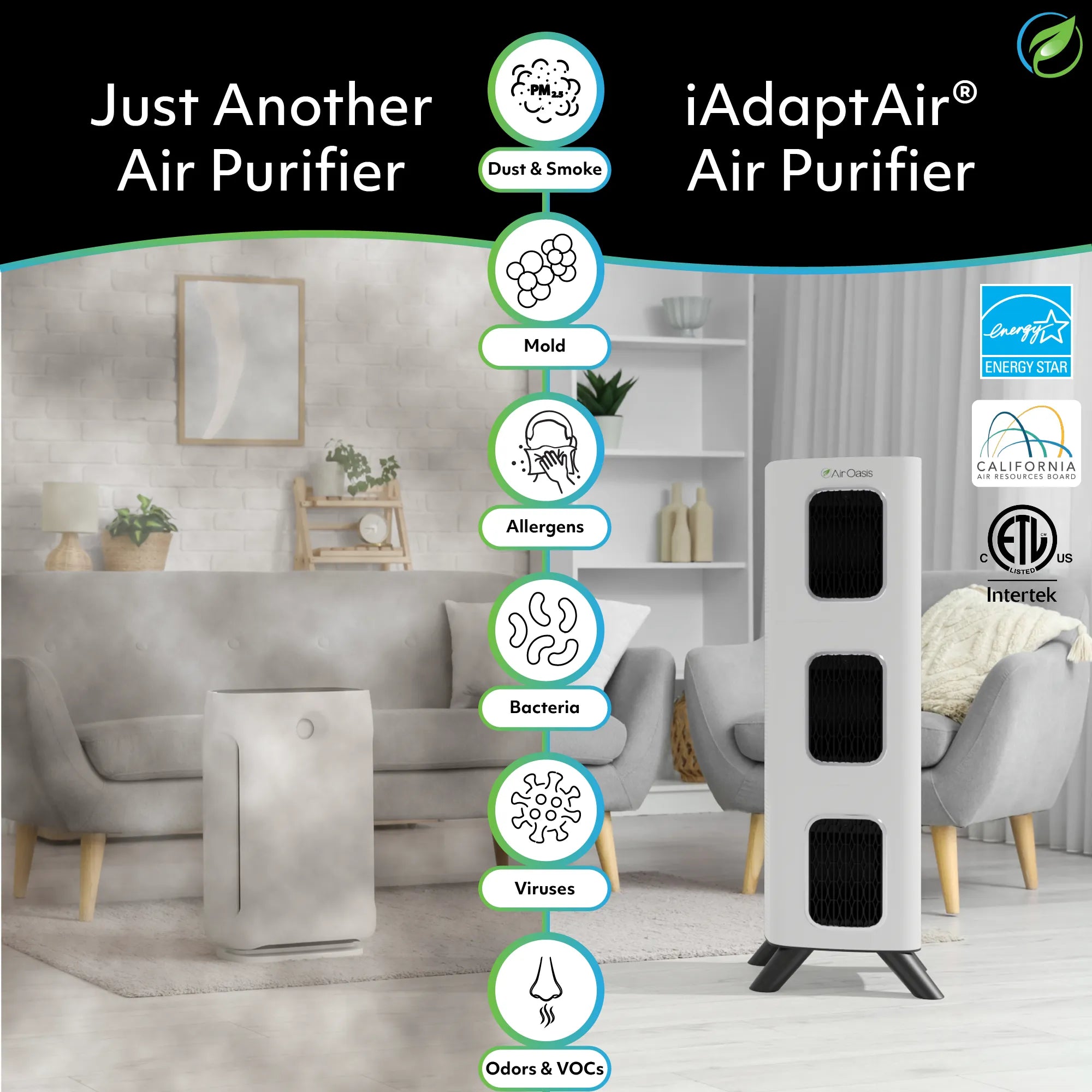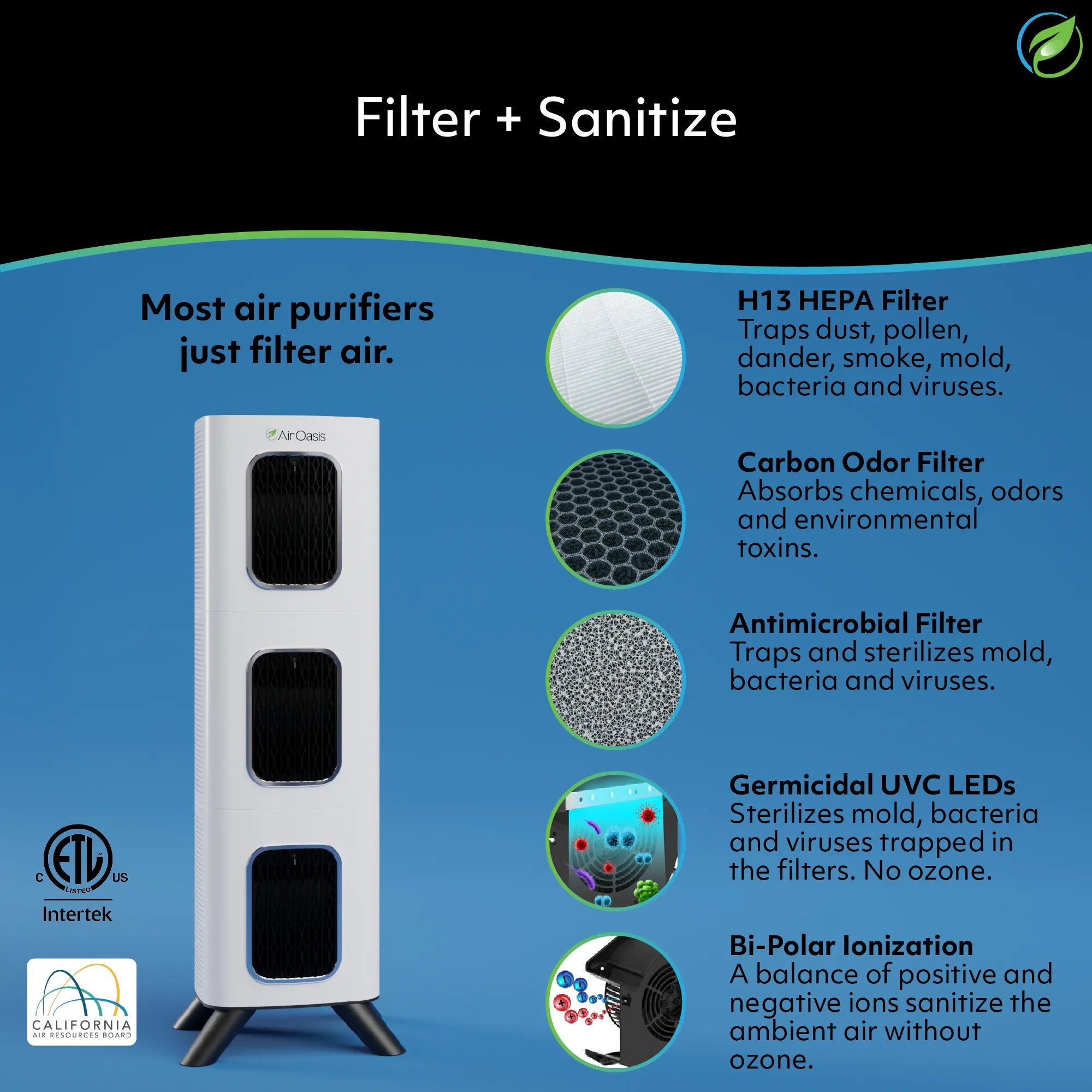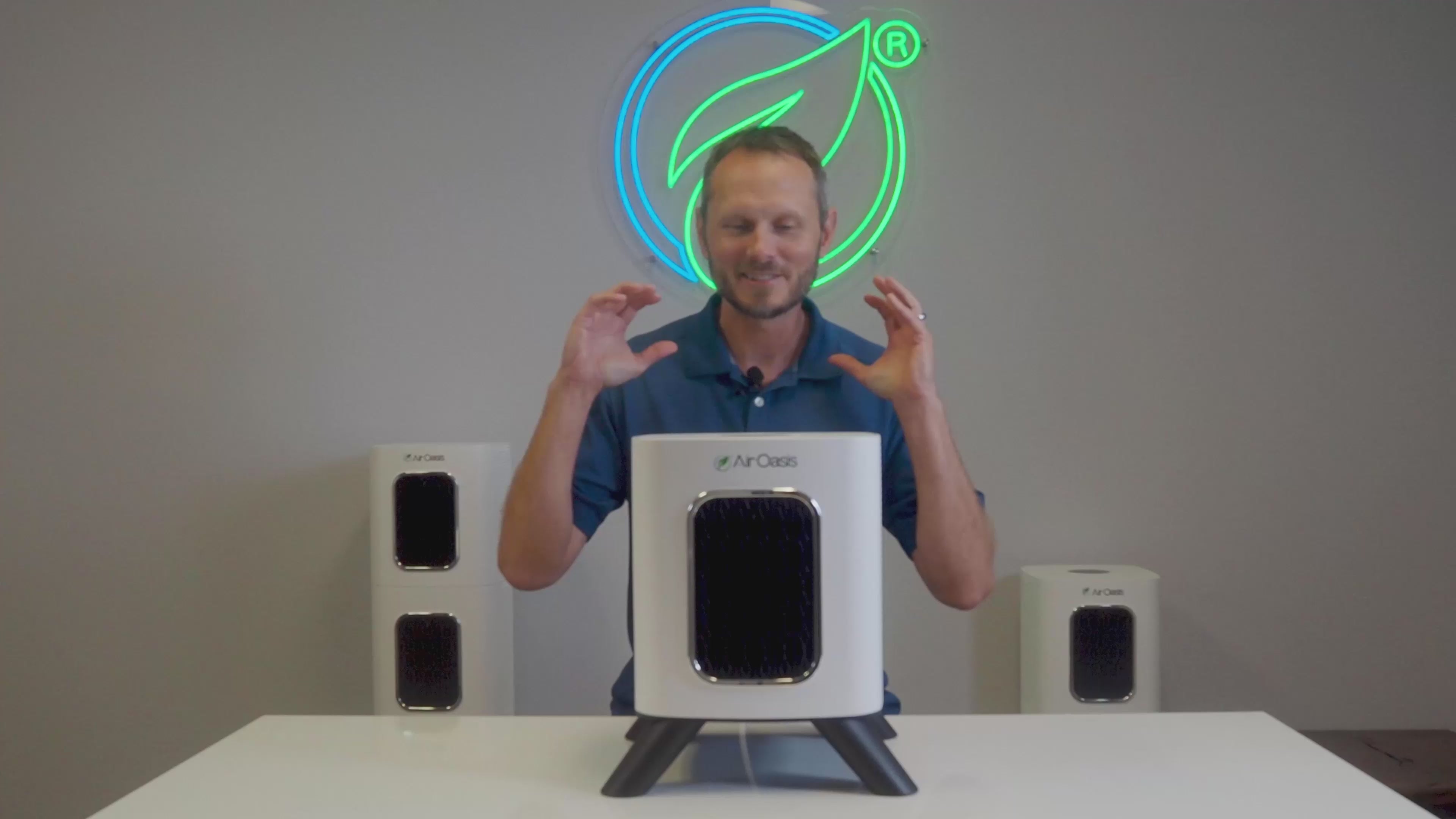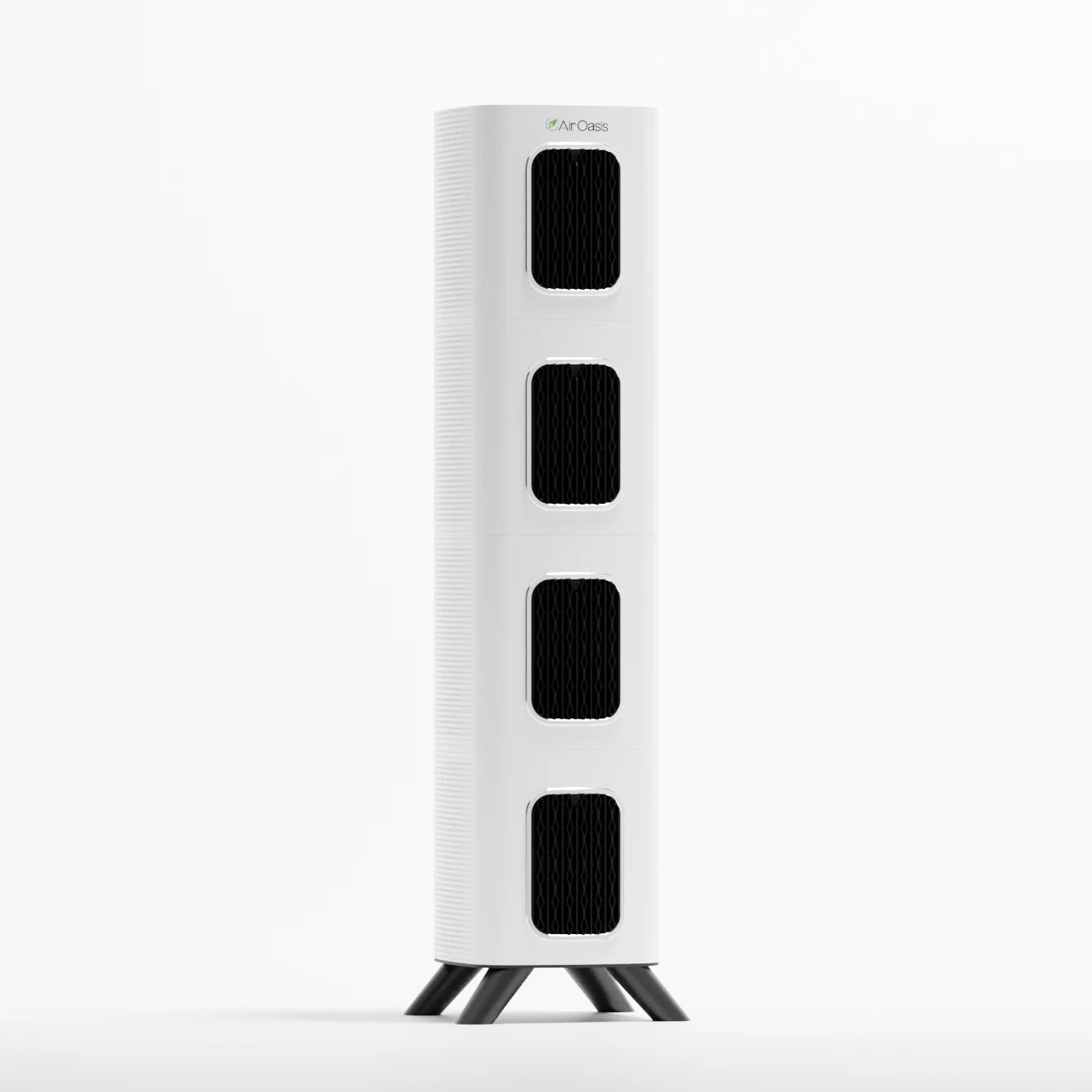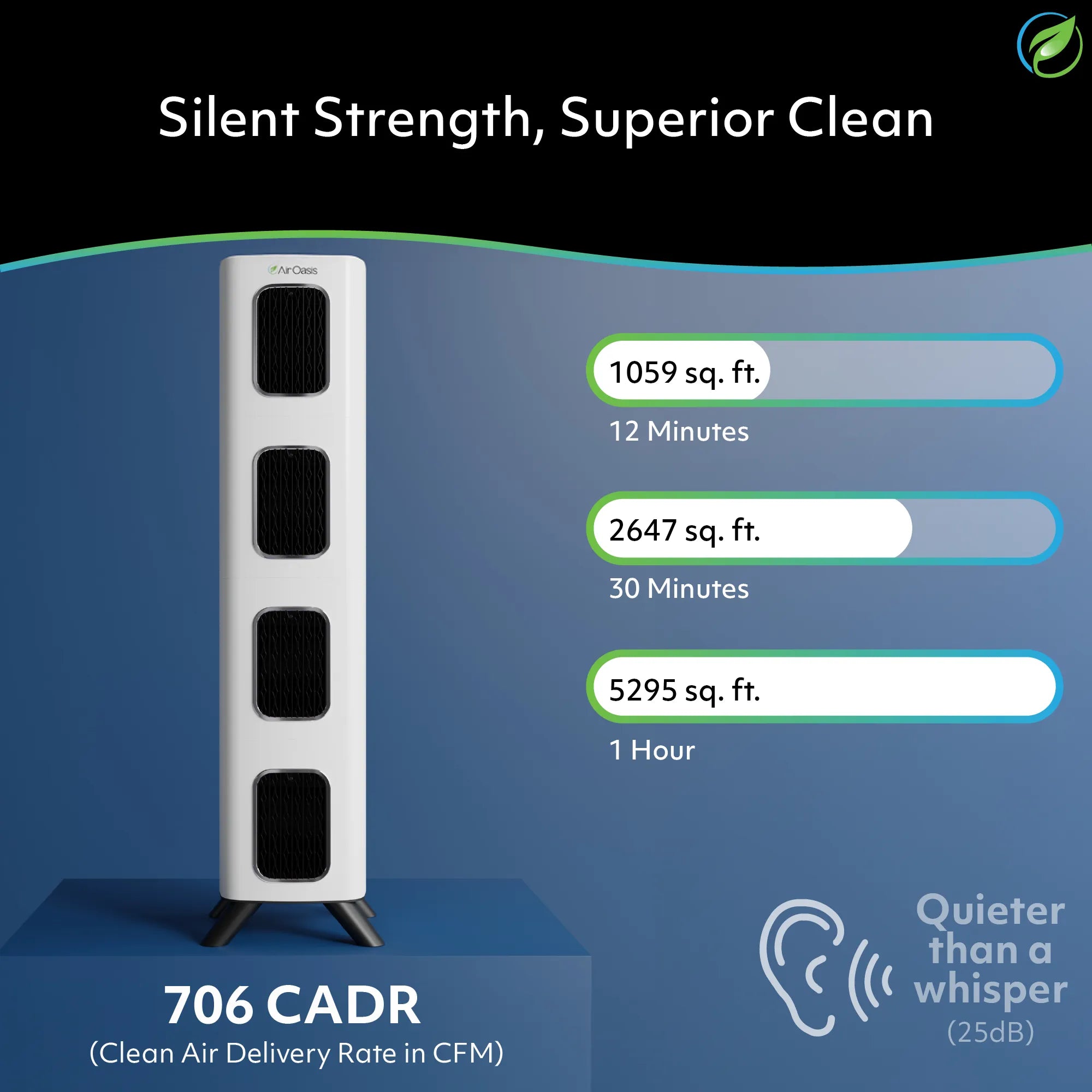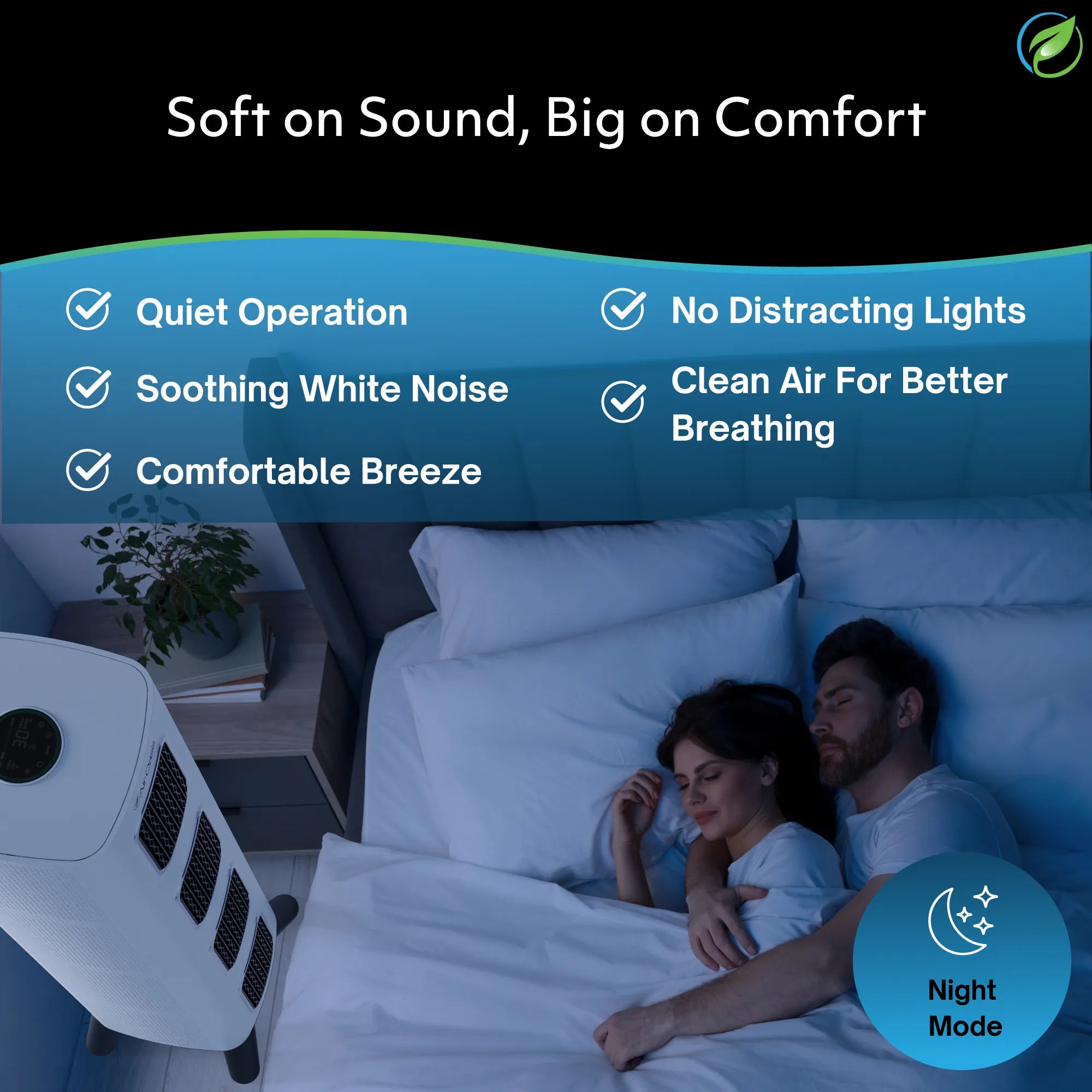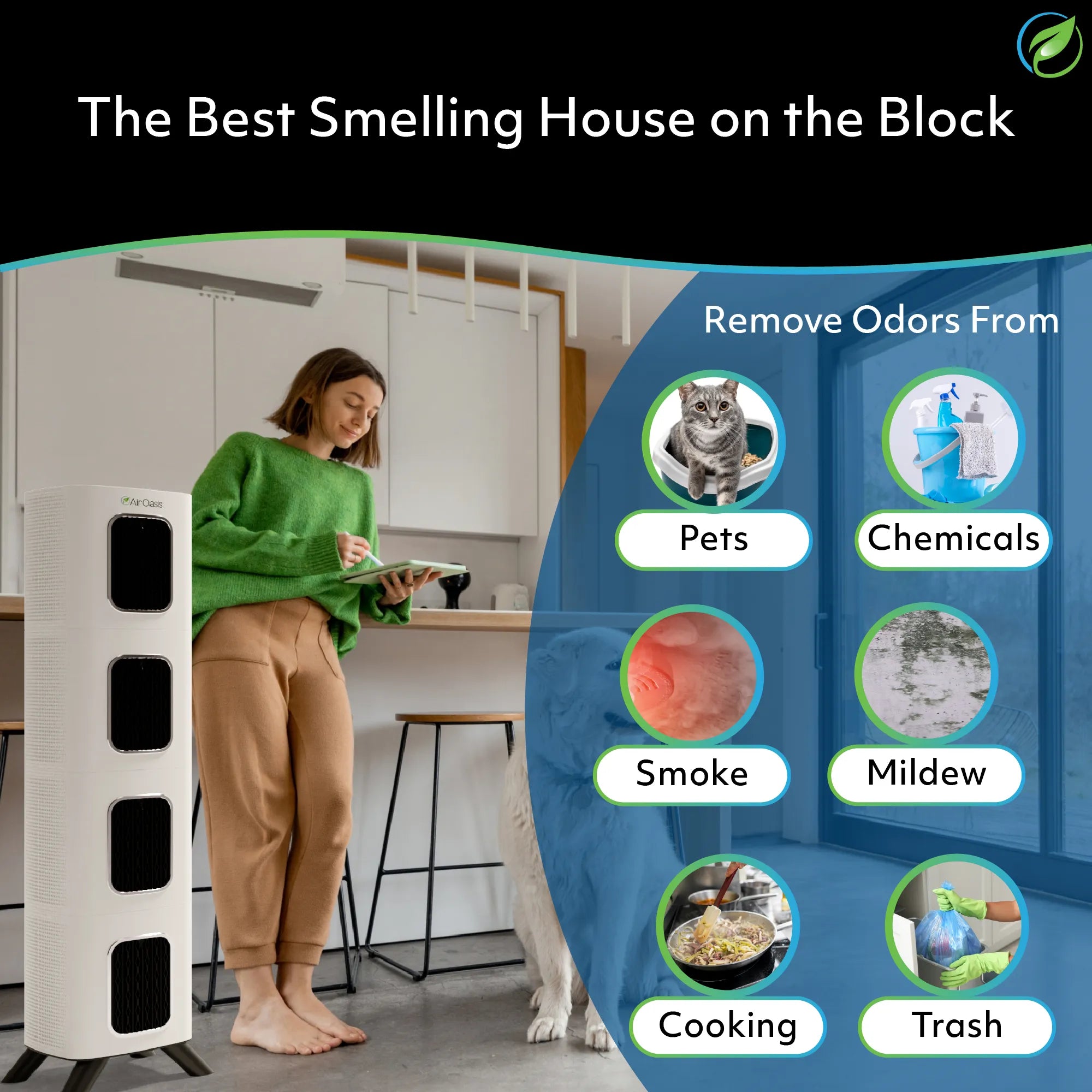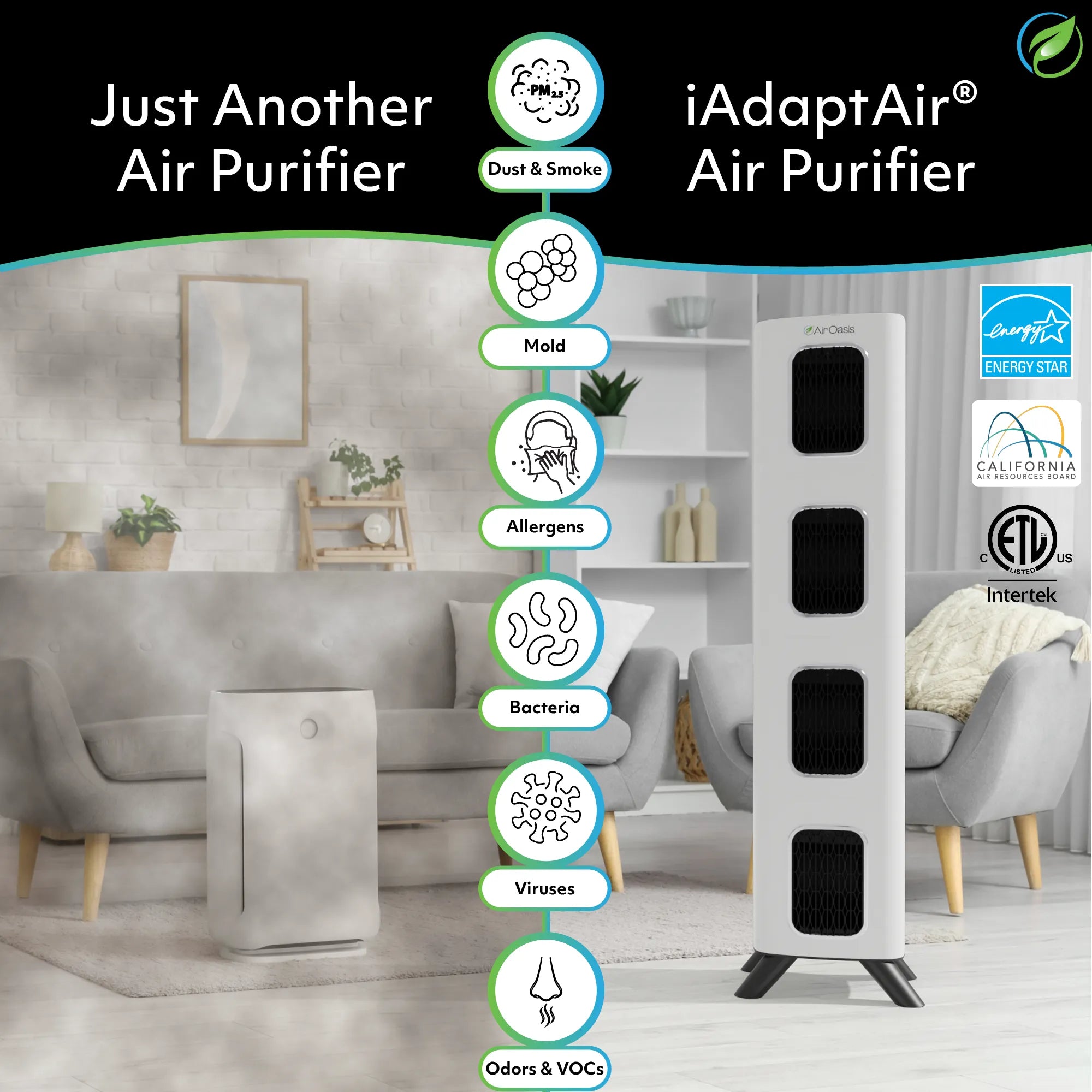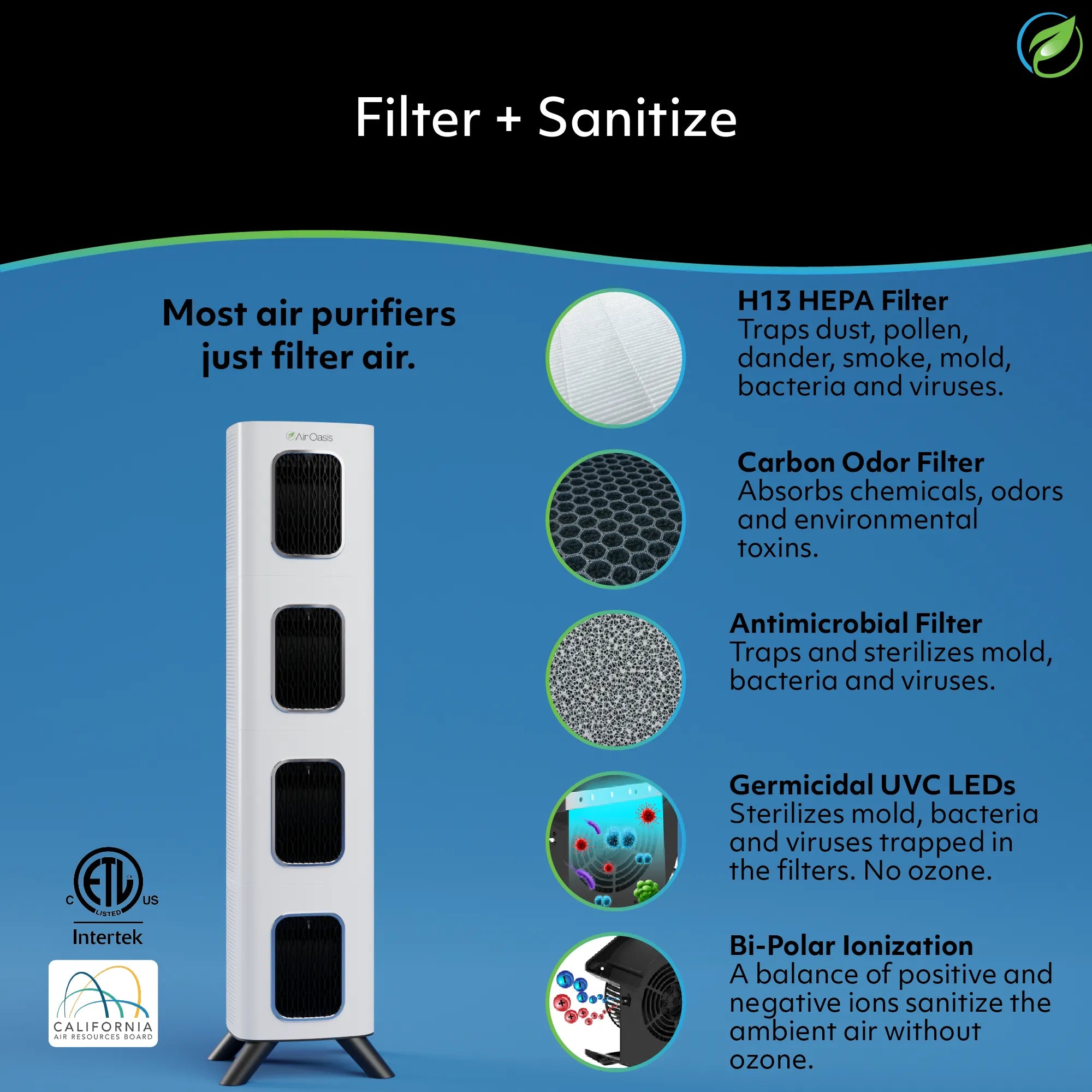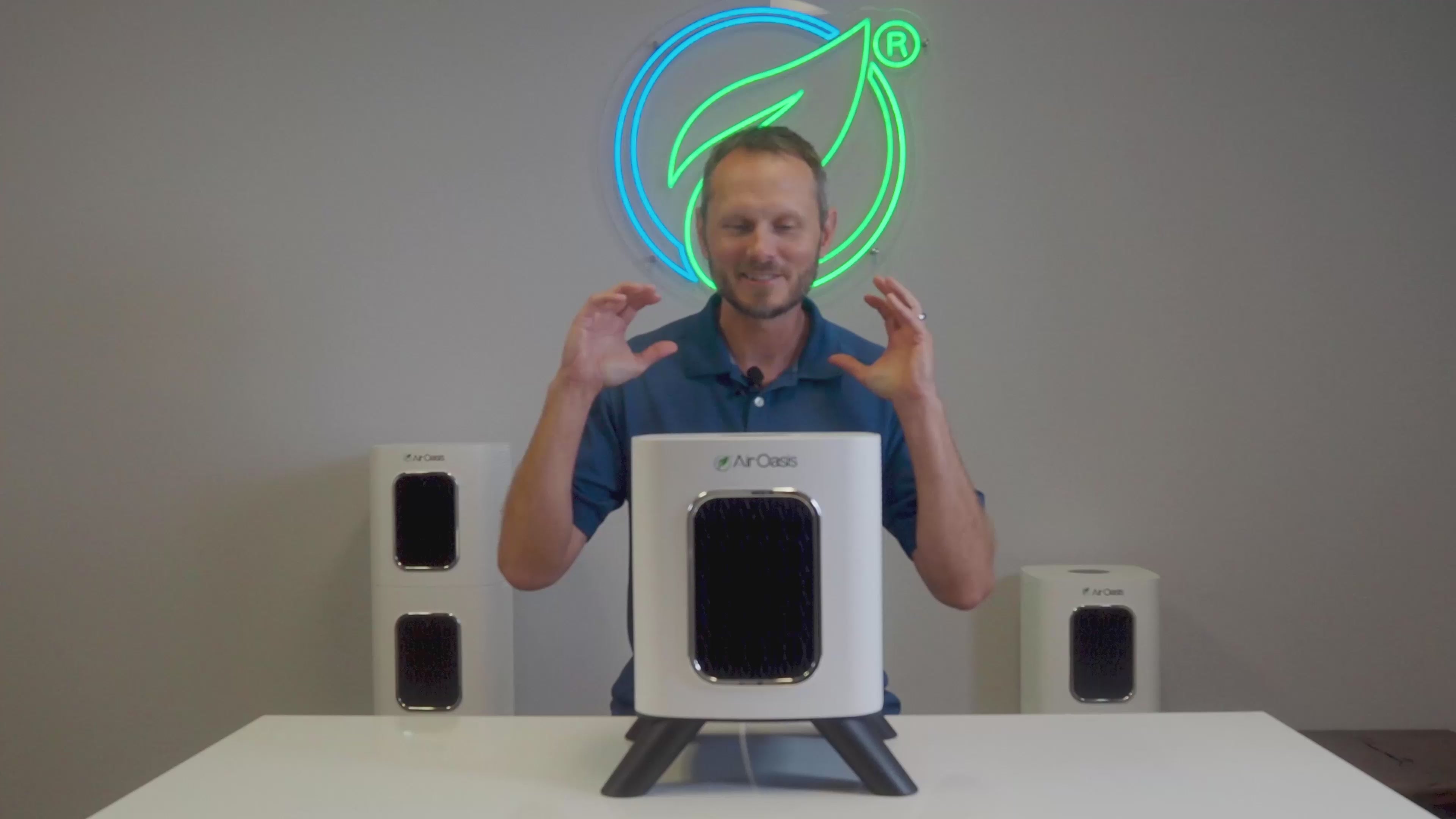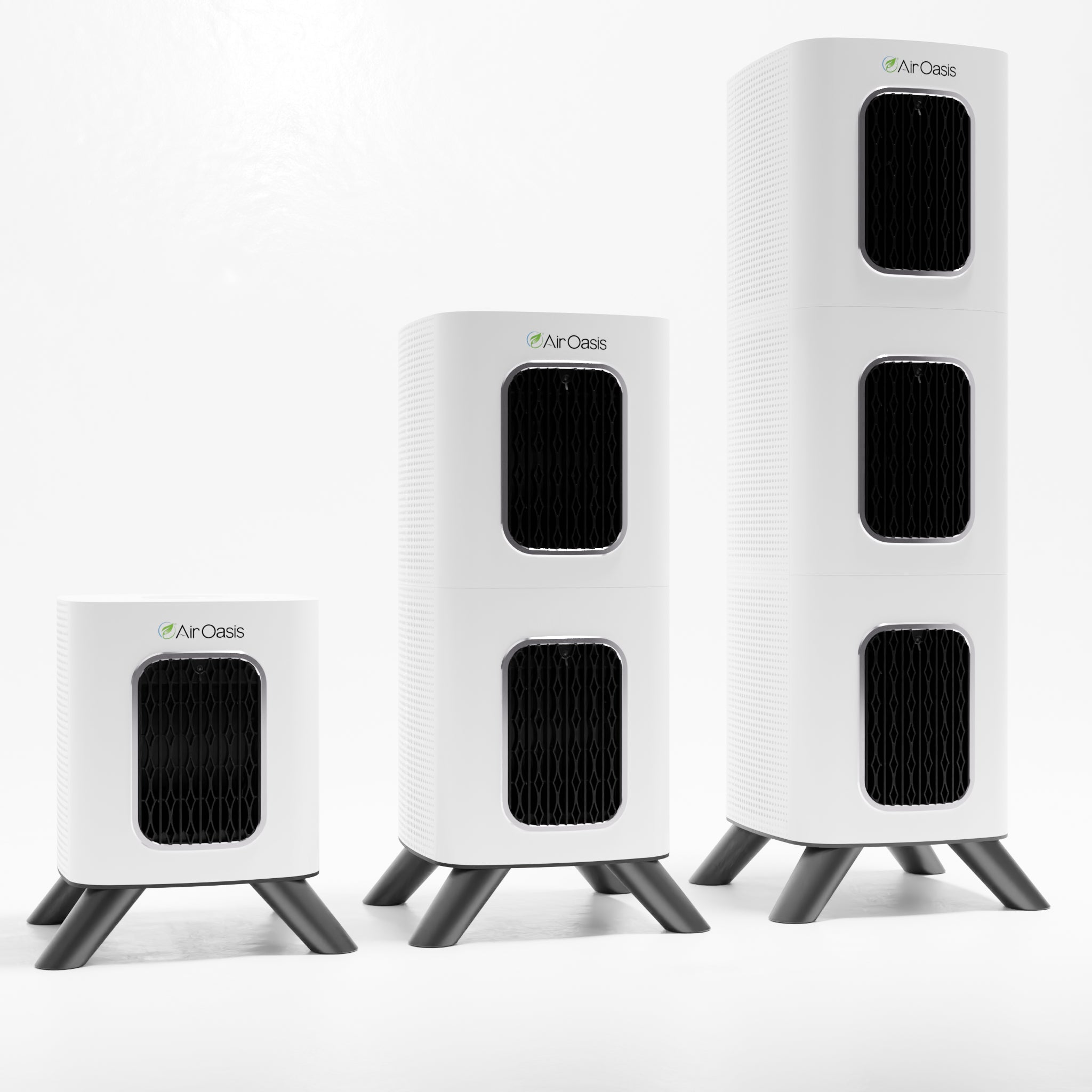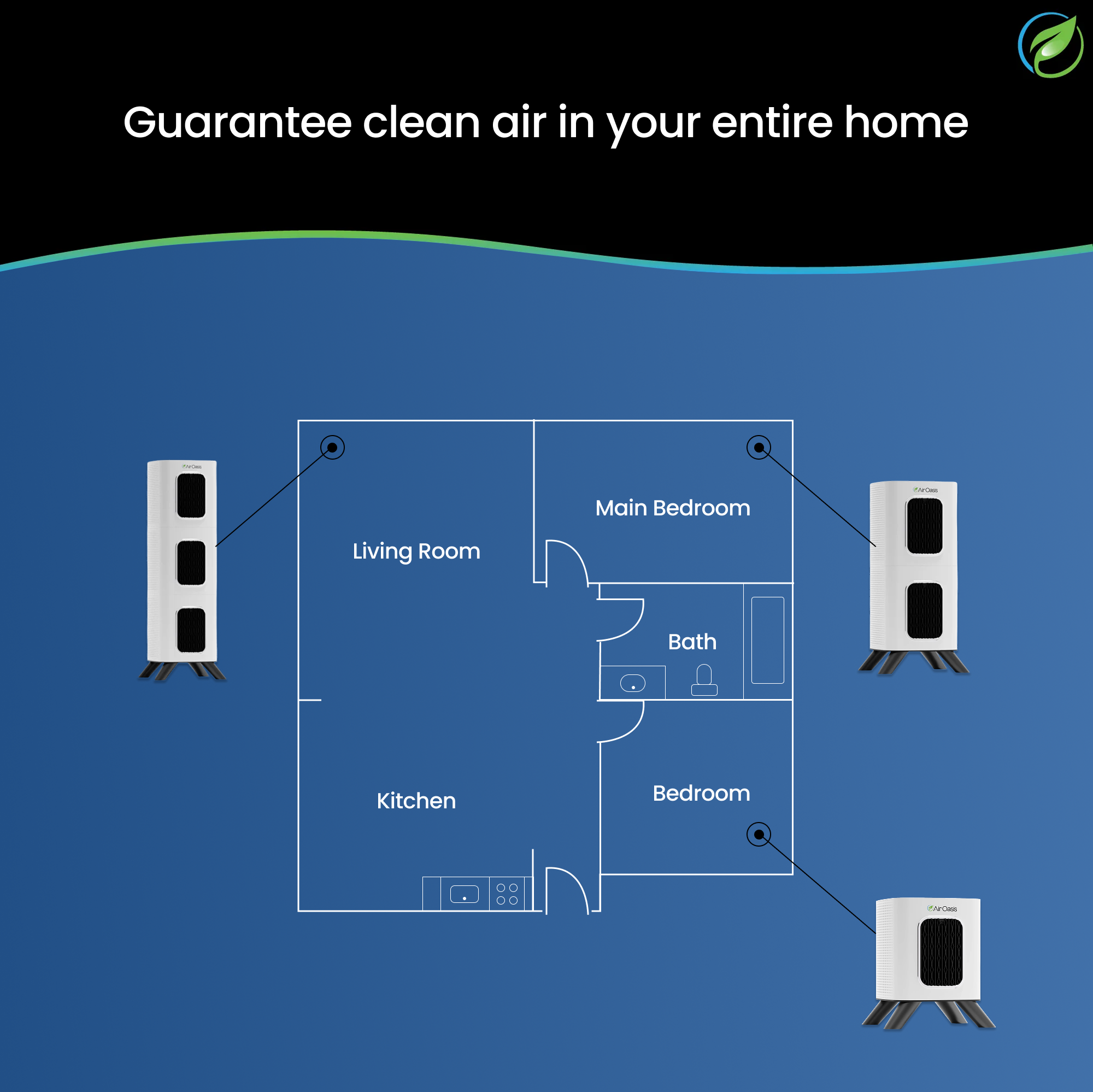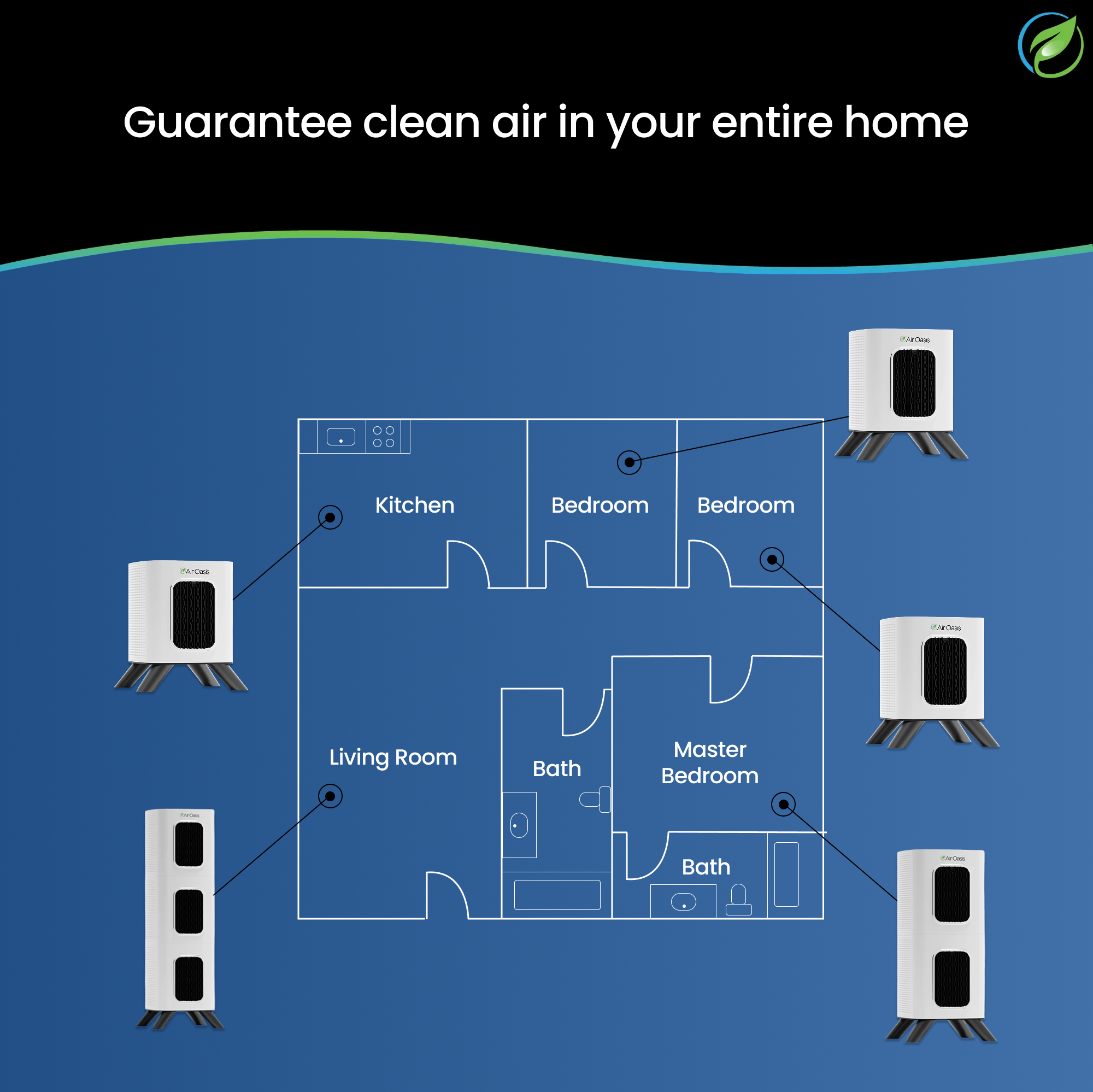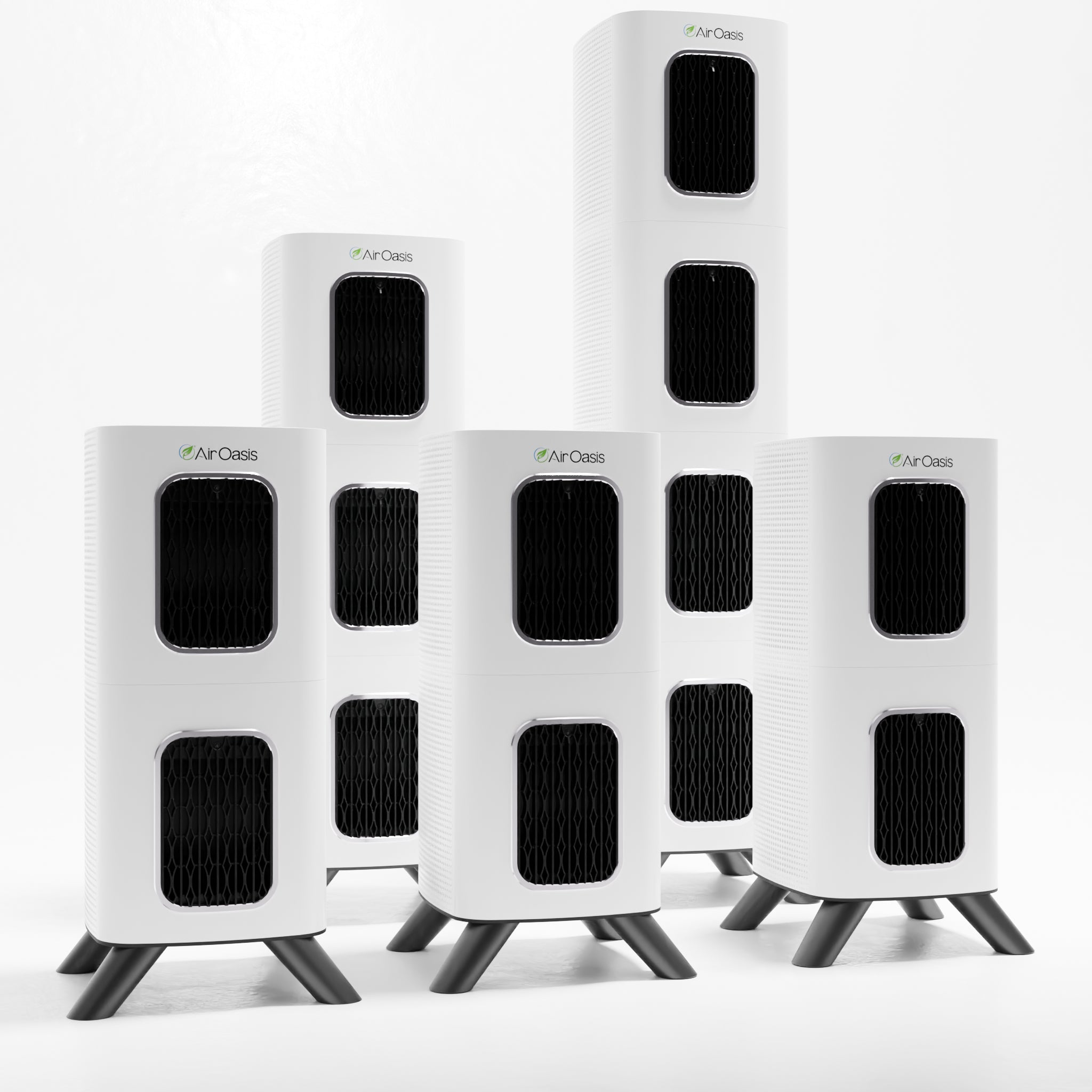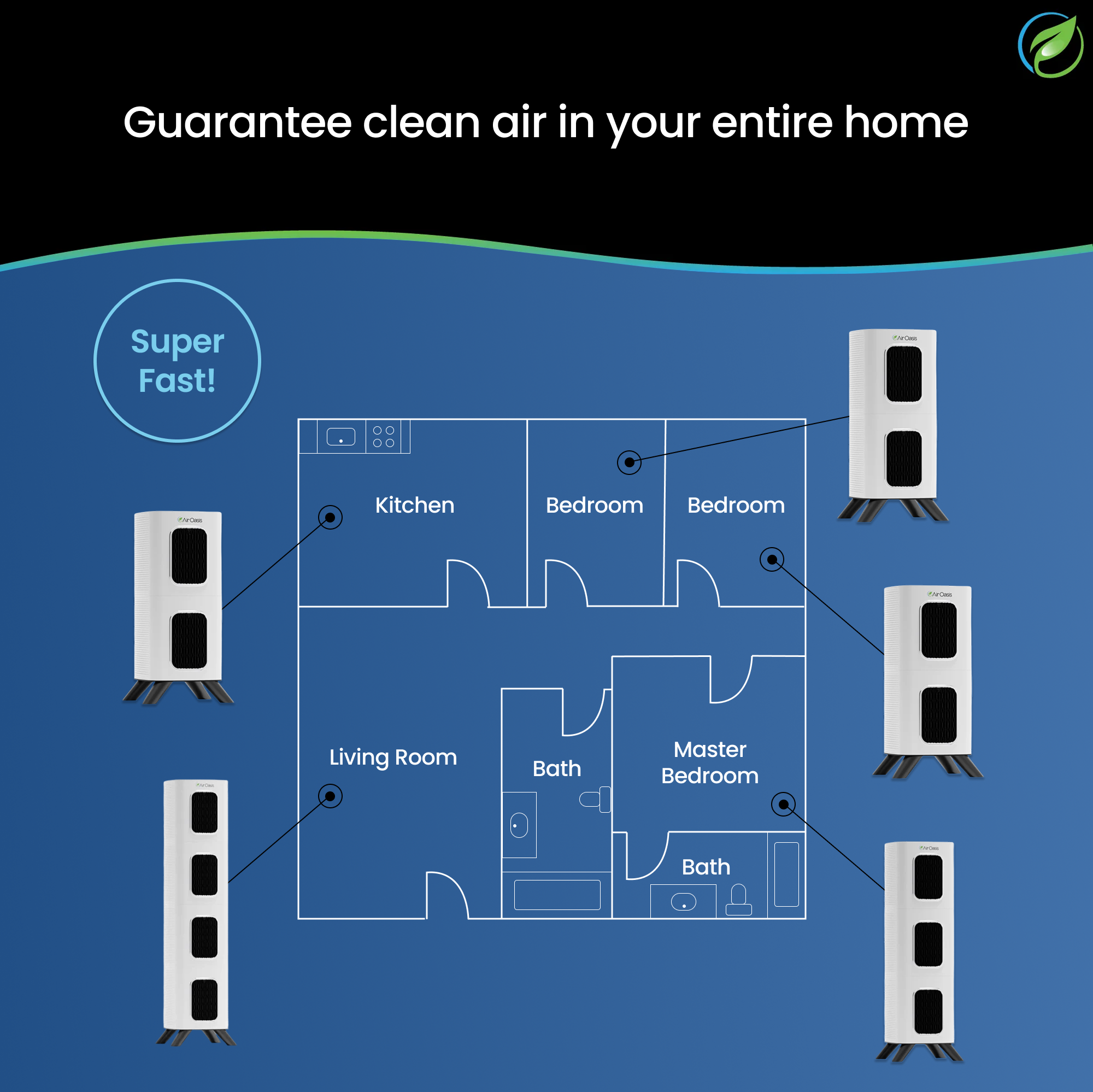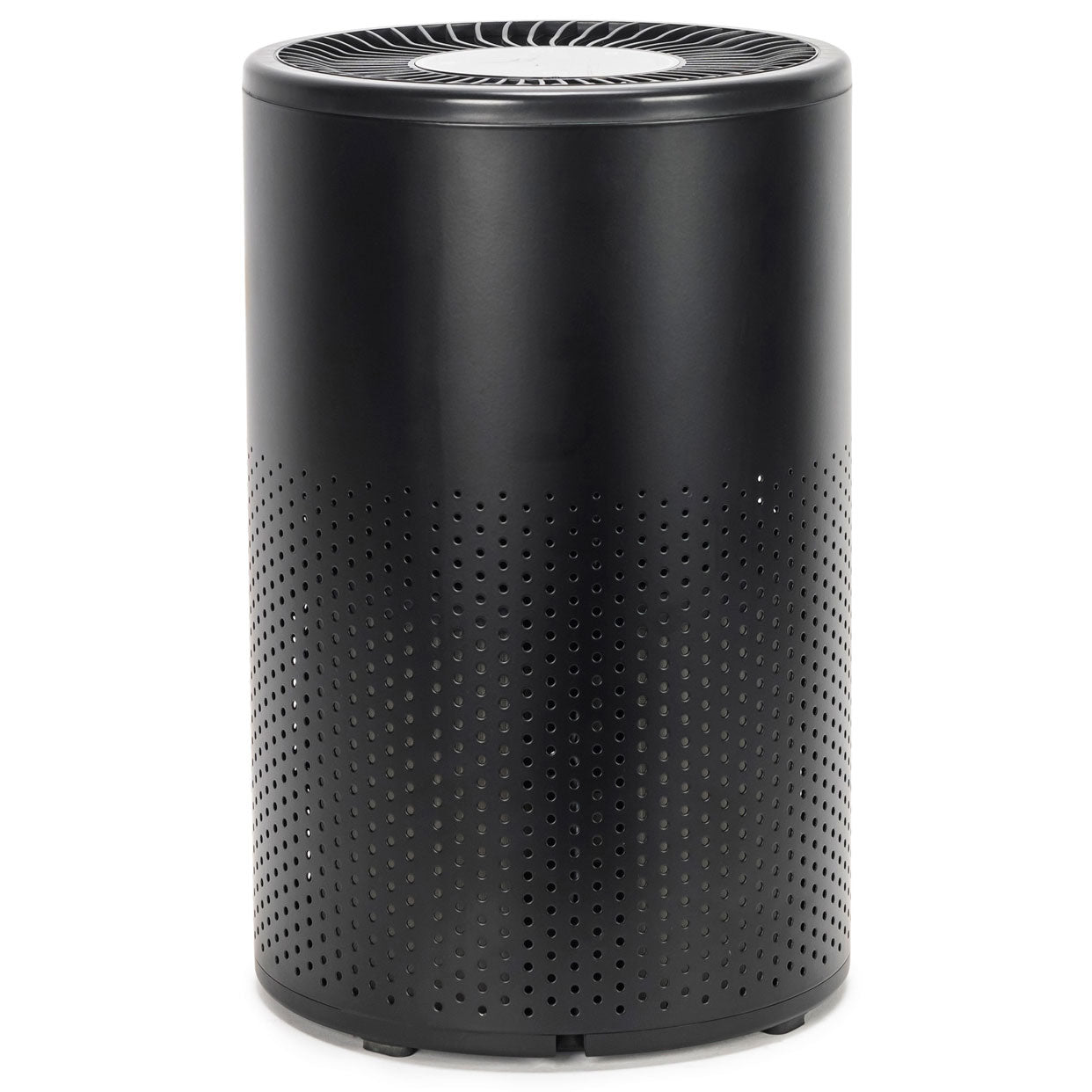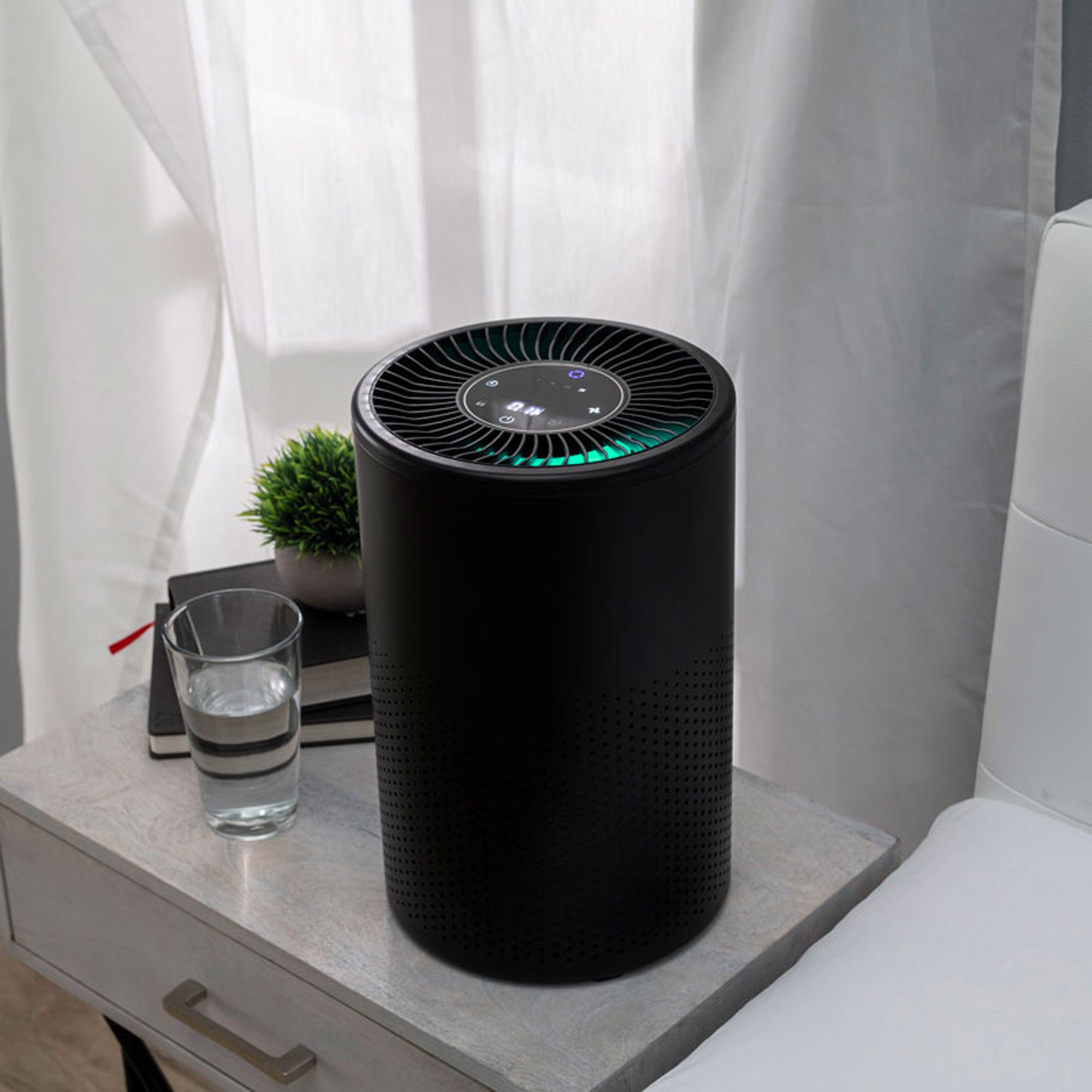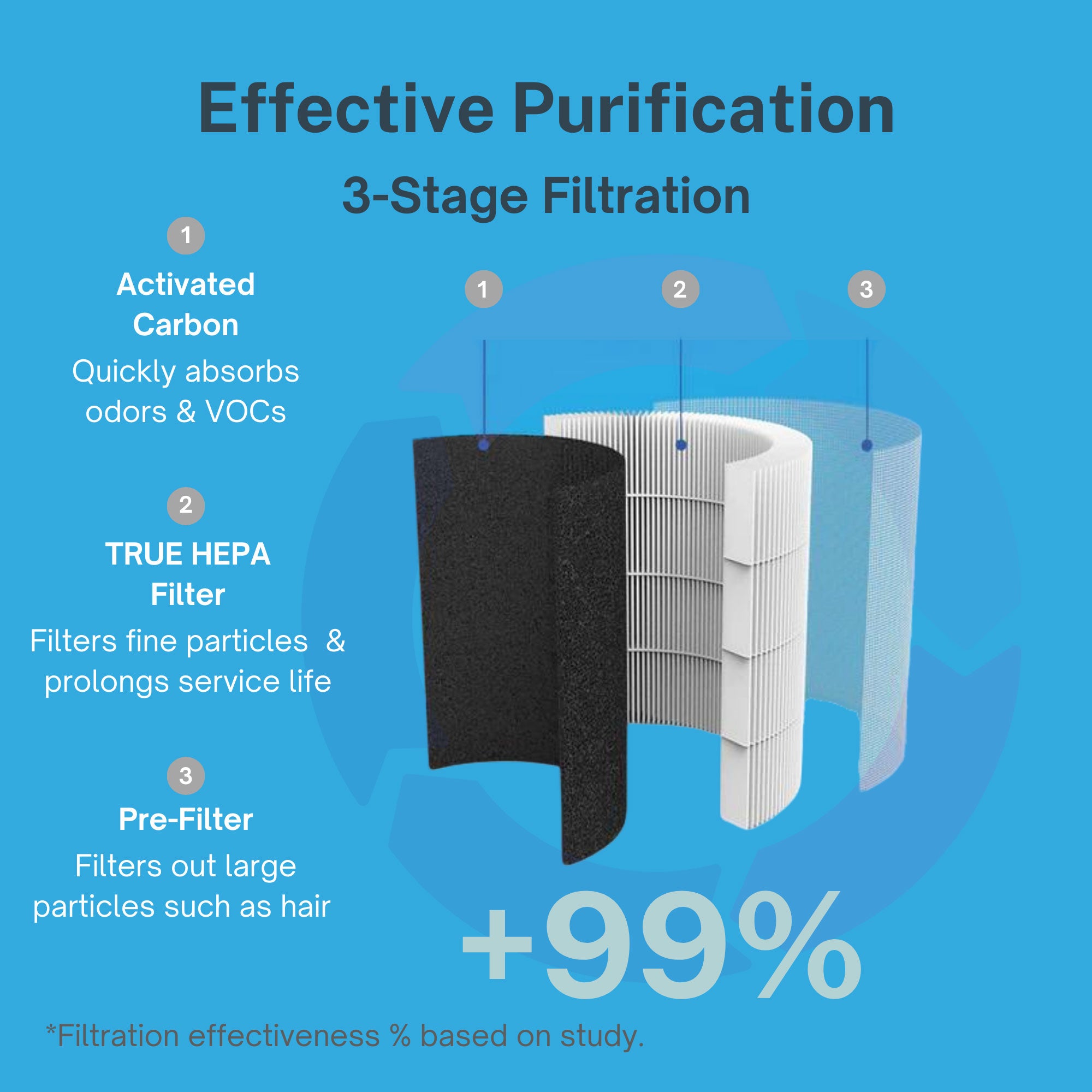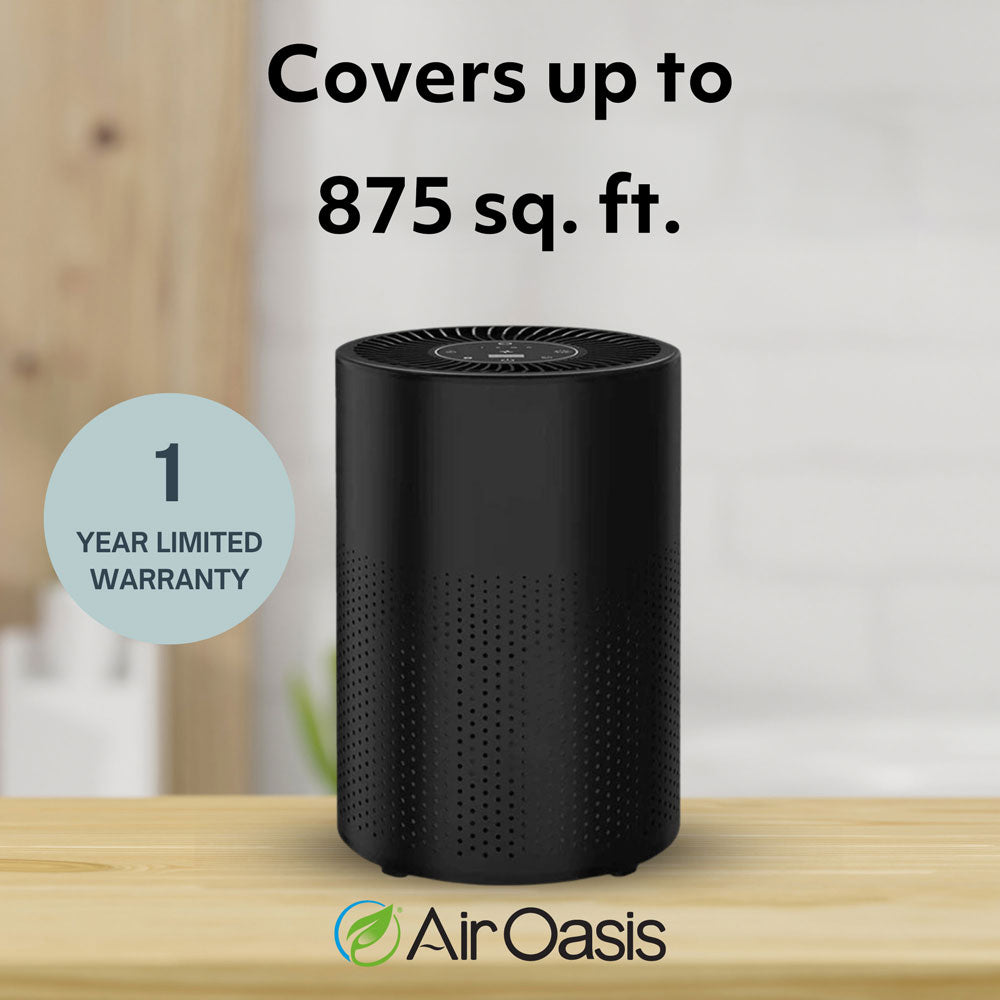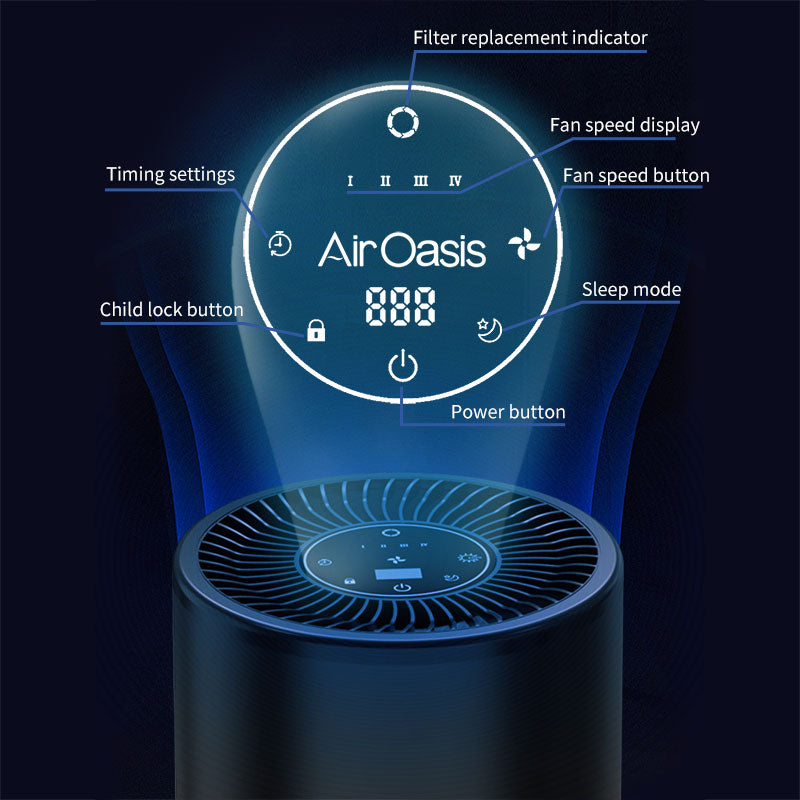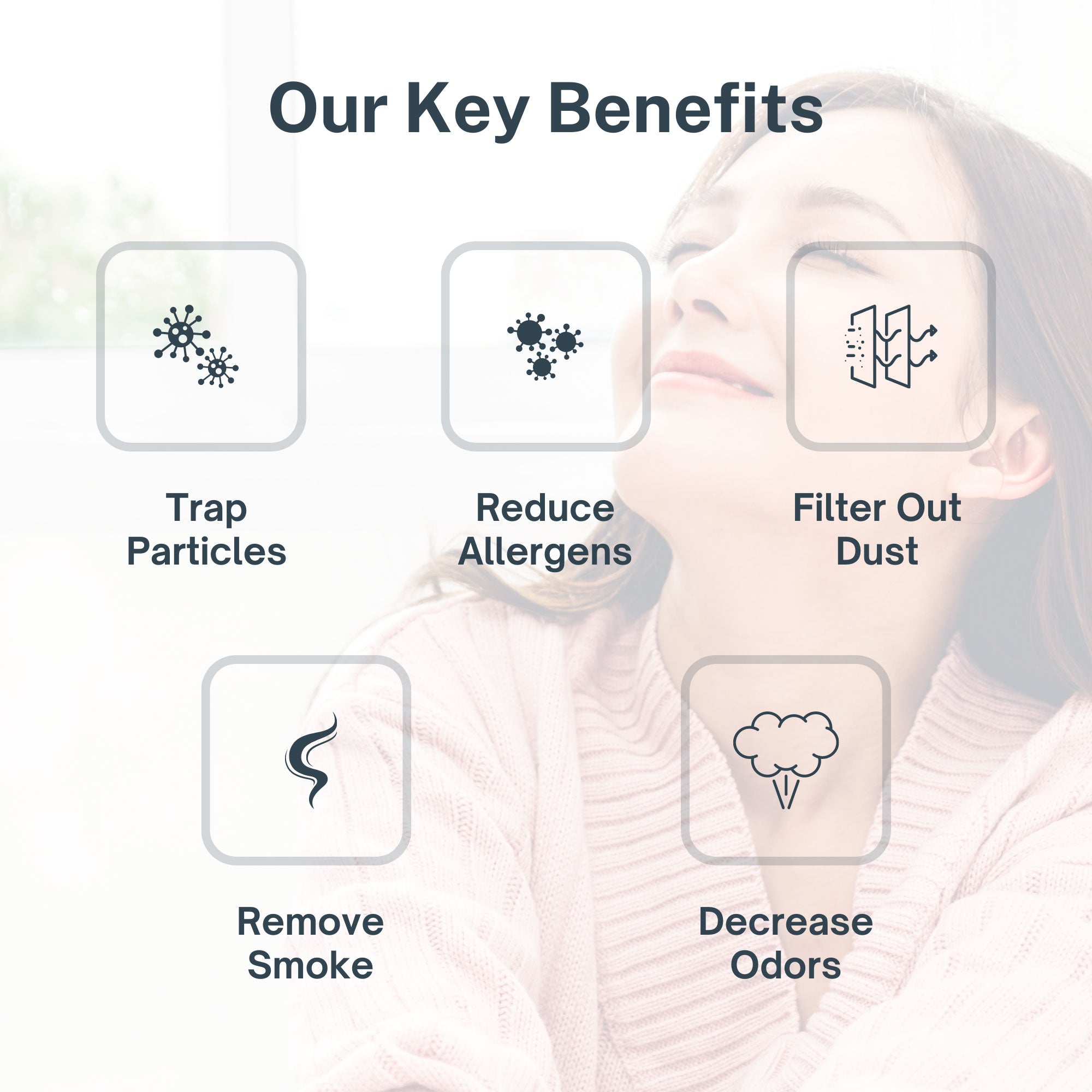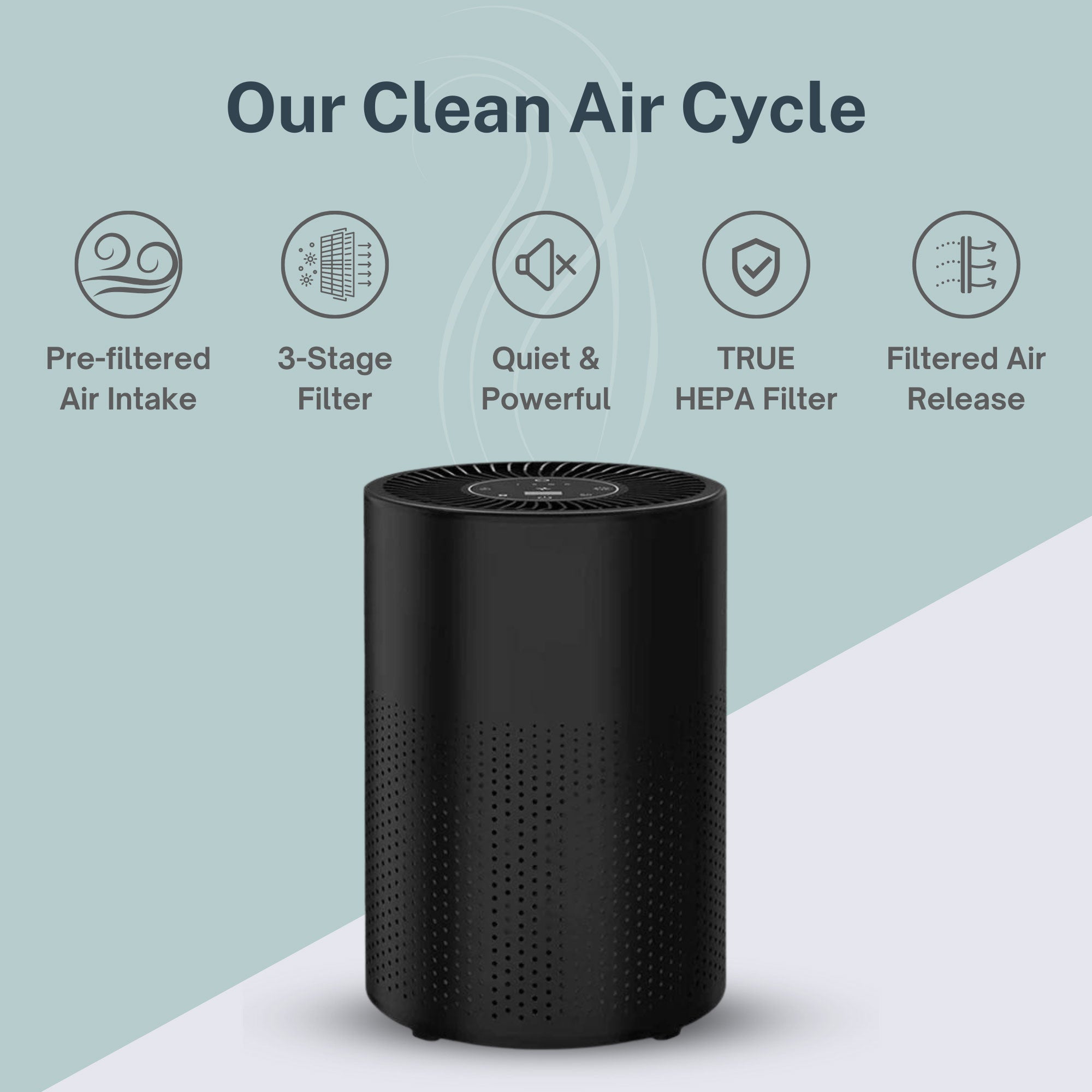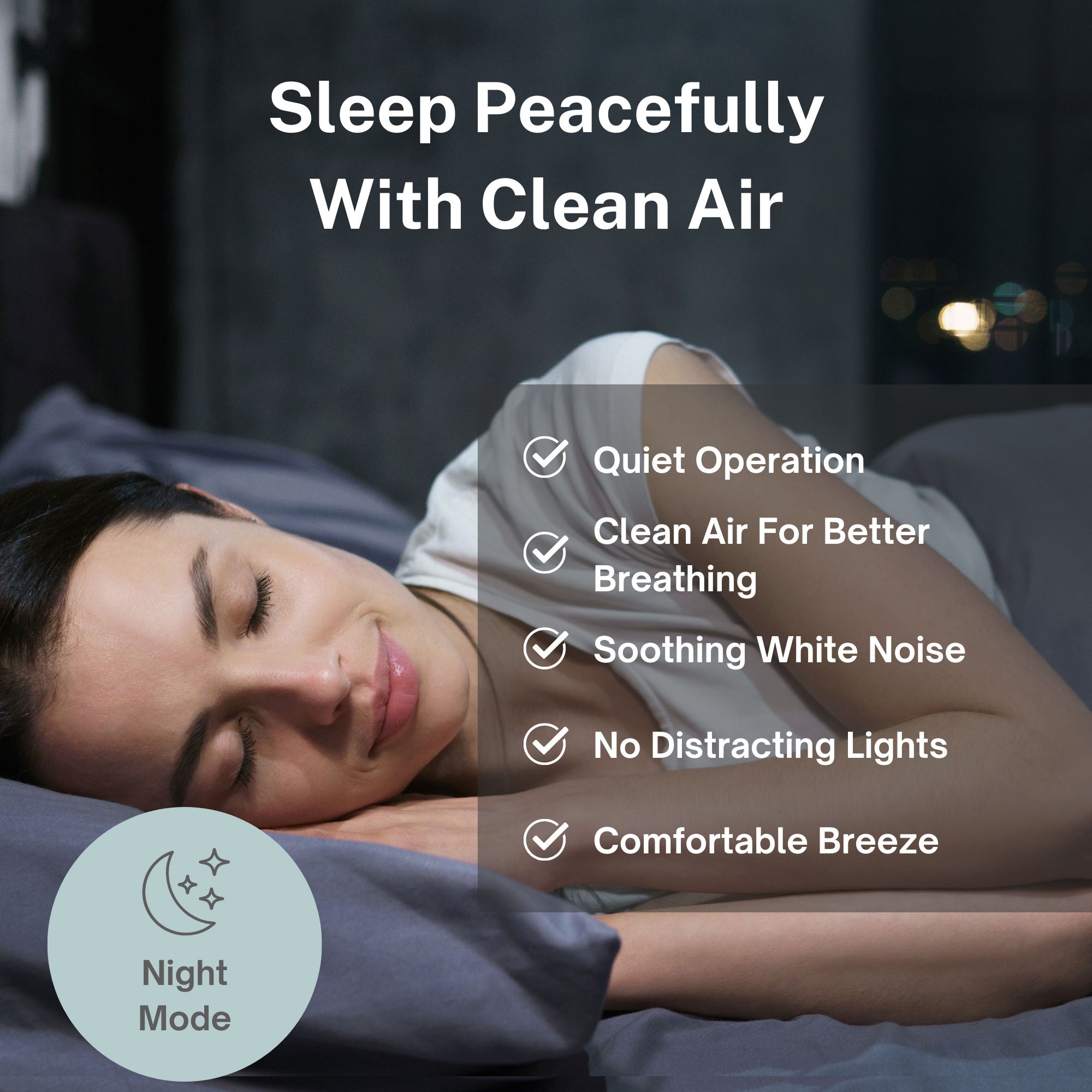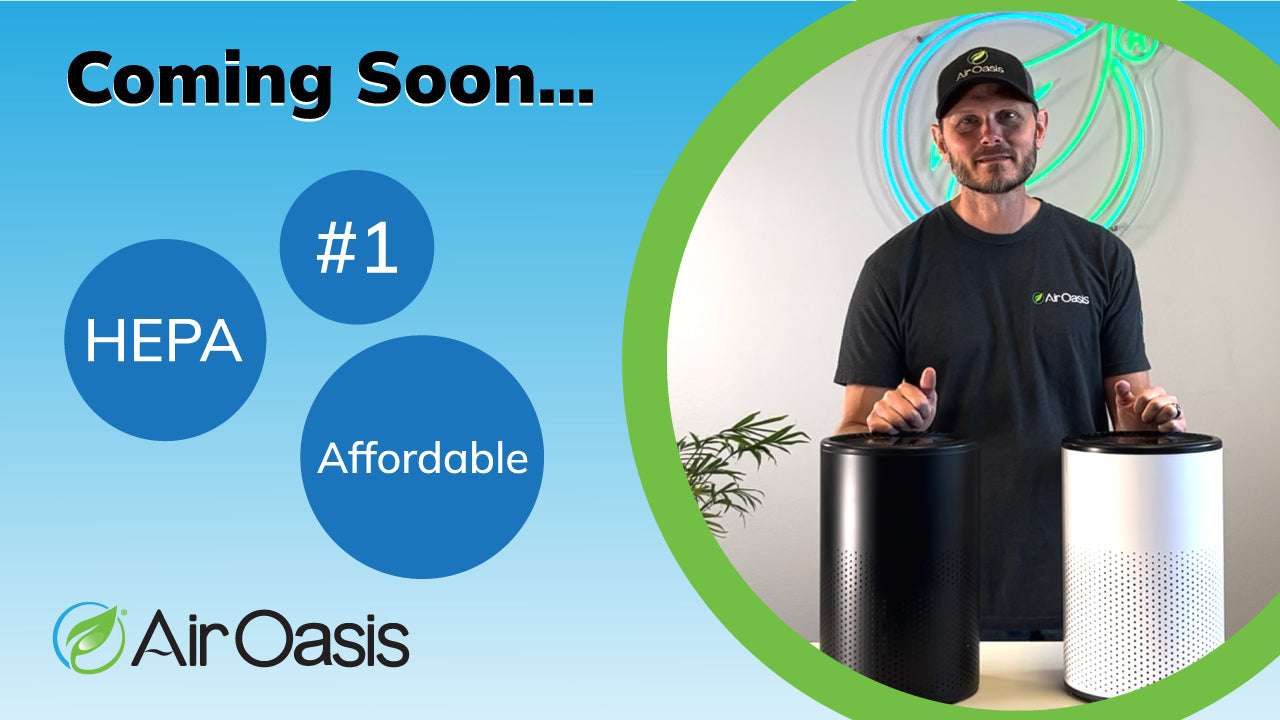Are you worried about black mold, or any mold for that matter? Despite fearing mold, many people don’t actually understand its implications for human health. If you’re one of those people, it may be time to educate yourself on the topic.
According to the Environmental Protection Agency (EPA), regions of the U.S. will experience heavier rains, hotter weather and more frequent and intense natural disasters in the coming years. These weather events may accelerate wear and tear on homes and cause water damage that leads to mold and bacterial growth, including mold spores, mold fragments, bacteria and related toxins such as mycotoxins and endotoxins.
Fortunately, there are several effective strategies to reduce mold and avoid sickness. One of the best ways to protect yourself is to run a high-quality air purifier for mold. Keep reading to learn about the health effects of black mold and how to prevent mold sickness.
Need a powerful air purifier for mold? Air Oasis purifiers drastically reduce airborne contaminants, including mold, allergens, VOCs, smoke, viruses, bacteria and more. Visit our online store today and start breathing easier.
Why Is Black Mold Dangerous?
When people refer to black mold or toxic black mold, they’re generally talking about Stachybotrys chartarum — a specific variety of microfungus. Not all black-colored mold is black mold and not all harmful mold is black; the color of toxic and non-toxic molds vary, so professional advisement is recommended. What makes black mold (or any toxic mold) dangerous is its byproducts.
Black Mold Spores
All molds spread through tiny reproductive cells called spores. Airborne spores float until they land on a surface; if the environment is moist and cellulose rich, they grow. Mold spores have fragments that break off from the main structure which can also cause harm. When inhaled by someone with a mold allergy, black mold spores or fragments like beta-glucans can cause physical symptoms. However, spores aren’t what makes black mold dangerous, but rather the mycotoxins they may carry.
Black Mold Mycotoxins
Mold also produces mycotoxins, secondary metabolites that can cause an immune response on some people genetically predisposed to react to certain biotoxins. Black mold can produce two types of trichothecene mycotoxins, but only one of them is toxic. Researchers estimate that only about one-third of black mold is able to produce toxic trichothecenes. As a result, some Stachybotrys chartarum colonies can be more troublesome than others, and mold testing offers limited insight as individuals can have drastically different reactions to the same strain.
Black Mold Exposure
Whereas some people who are exposed to black mold will experience serious health consequences, others will be unaffected. The severity of health effects depends on a number of factors, including the following:
- Whether the person is genetically predisposed to a biotoxin illness
- Whether the black mold colony produces dangerous mycotoxins
- The level of exposure
- The duration of black mold exposure
People who have poor nutrition, a weakened immune system, a genetic predisposition, low detox capability and comorbidities are more likely to experience severe health effects. This abrasct by the World Health Organization may be insightful as background.
Health Effects of Black Mold
Toxic black mold is a controversial topic, and some researchers argue that the non-allergic symptoms associated with mold toxicity have been overblown by the media. However, there is sufficient evidence to suggest that in addition to allergic and inflammatory reactions, exposure to high levels of mycotoxins can produce severe health effects. In addition, and perhaps most importantly, there is a growing body of evidence that certain people are more susceptible to biotoxin illness base on their genetic makeup.
Allergic Reaction
For people who have mold allergies, repeated or single exposure to mold (including black mold) can cause hay fever-like symptoms like headache, sneezing, runny nose, red eyes and skin rash. However, even people who are not allergic to mold can experience eye, skin, nose, throat and lung irritation when they breathe in black mold. Infants, older adults and people with asthma, chronic obstructive pulmonary disease (COPD) or a compromised immune system are more likely to experience black mold allergies.
Black mold is especially dangerous for asthmatics and can cause shortness of breath, cough, chest tightness, wheezing and asthma attacks. Although the connection between mold and exacerbated asthma symptoms has been established for years, new research suggests there may be a connection between mold and new-onset asthma.
Respiratory Disease
People who live or work in buildings with black mold are at risk for developing hypersensitivity pneumonitis, an immune system disorder that causes chronic lung inflammation. Hypersensitivity pneumonitis is an allergic reaction that occurs after sustained exposure to a particular irritant or allergen. Black mold can also cause acute neutrophilic rhinitis, an upper respiratory disease that results in persistent nasal infections.
In a 2013 meta analysis, researchers found that dampness and mold in the home were associated with all types of rhinitis, not just allergic rhinitis. They observed the largest risk in relation to mold odor, as well as increased risk in relation to visible mold and exposure to dampness. These findings suggest a positive correlation between mold odor and inhalation of biotoxins.
Chronic Illness
Long-term exposure to black mold can cause chronic illness. With repeated inhalation of toxic trichothecenes (a type of mycotoxin), some people develop chronic inflammatory response syndrome (CIRS). CIRS affects many different systems of the body and can cause neurological and digestive issues, as well as extreme fatigue, body pain, nasal congestion, mood swings, vertigo and more.
Black mold doesn’t cause chronic illness immediately; many people develop chronic illness after prior exposure to water-damaged buildings. In a 2014 study, researchers found that the sinuses can continue to harbor mold even after a person leaves a moldy environment. The mold continues to release mycotoxins over time, contributing to the development of chronic illness.
Black Mold Poisoning
In severe cases, exposure to toxic black mold has been linked to non-allergic symptoms, including neurotoxicity. Mold toxicity can present with a host of symptoms such as the following:
- Circulation issues, swelling
- Loss of balance, dizziness
- Brain fog, cognitive impairment
- Digestive issues
- Blurred vision
- Depression, anxiety
- Sleep disturbances
- Fatigue
- Muscular and joint pain
- Neurological issues
In a 2017 study, Finnish researchers suggest that exposure to toxic indoor mold can cause insomnia, migraine, motor, and sensory peripheral neuropathy, as well as failure to thrive in newborn babies. Researchers argue that even a short-term stay in a building with toxic mold can be hazardous to health — and life. Their findings also suggest that exposure to toxic mold can increase risk for developing cancer.
If you suspect biotoxin illness from mold and bacterial expsoure, it’s essential to seek professional help from training medical staff as well as indoor environmental professionals. Buildings with black mold infestations often require professional mold remediation services before they are safe for occupants again.
Air Purifiers for Black Mold
Without a dark, moist environment, black mold will be unable to colonize in your home. However, that doesn’t mean it goes away completely; mold spores will still waft through the air and lay on surfaces, waiting for the opportunity to grow again. Toxic byproducts and fragments from mold can attach to clothing and furnishings and be difficult to clean. One of the best ways to prevent black mold growth is by running an Air Oasis air purifier.
Air Oasis air purifiers can greatly reduce airborne indoor mold. Multiple scientific studies illustrate the effectiveness of Air Oasis purifiers against both airborne fungus and mold. Air Oasis air purifiers achieved this through a combination of powerful purification technologies, including overlapping filtration techniques and ionization.
If you’re concerned about the health effects of black mold, you need the best air purifier on the market. Air Oasis has got you covered. Questions? Contact us online or give us a call at (806) 373-7788.

